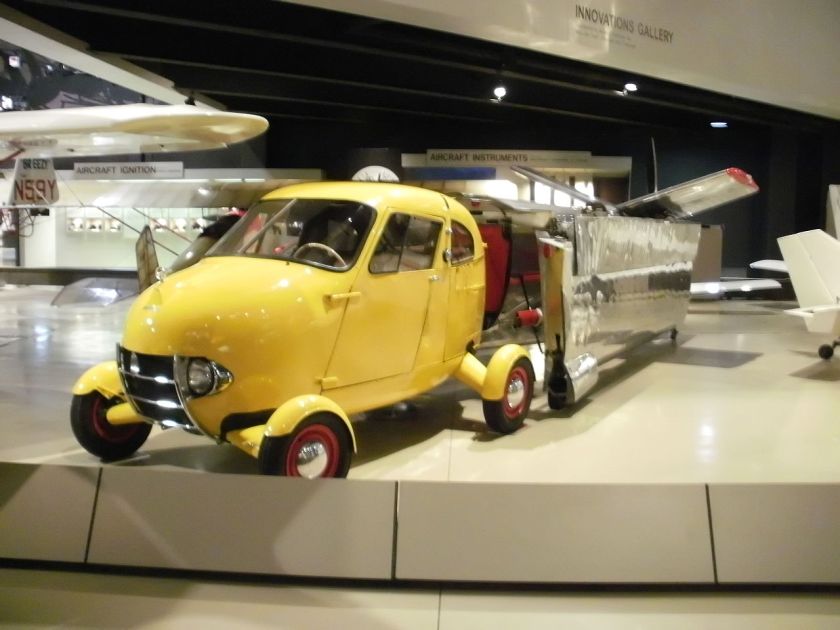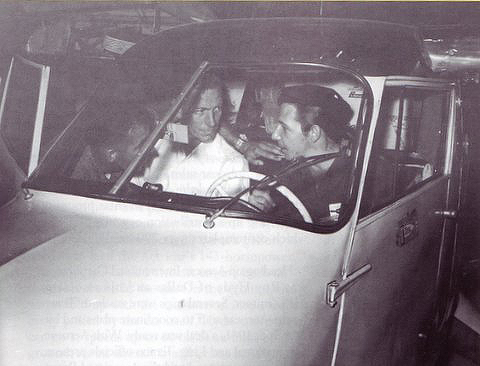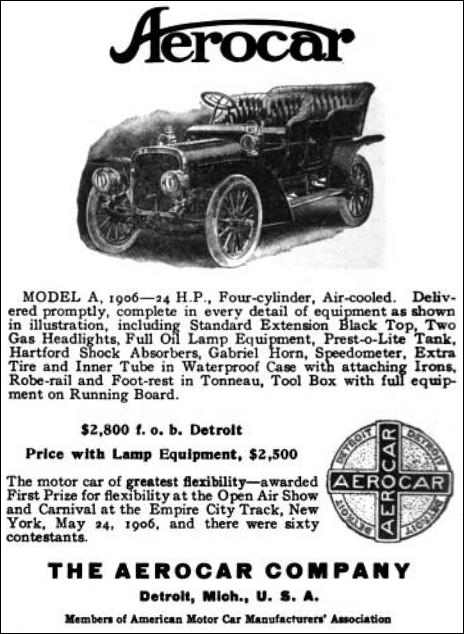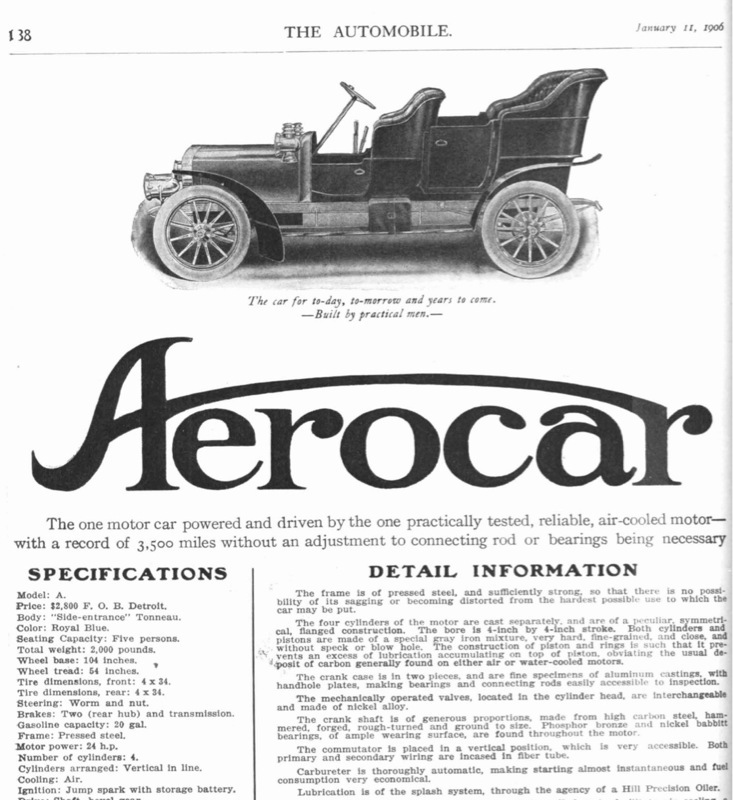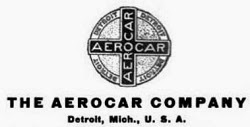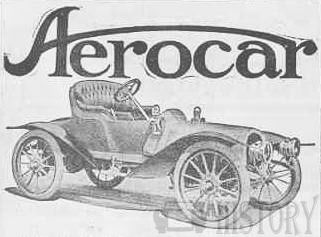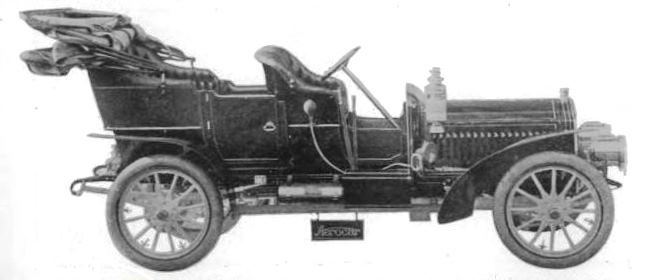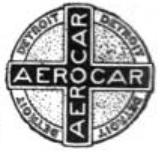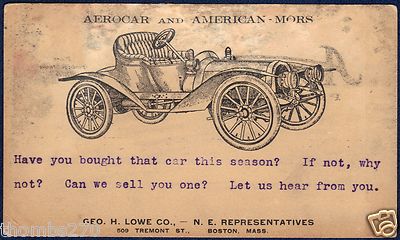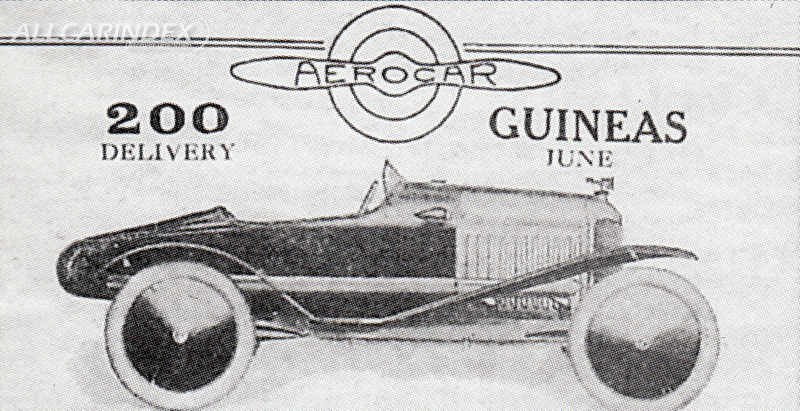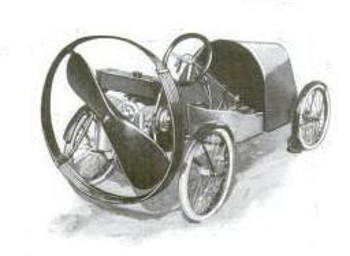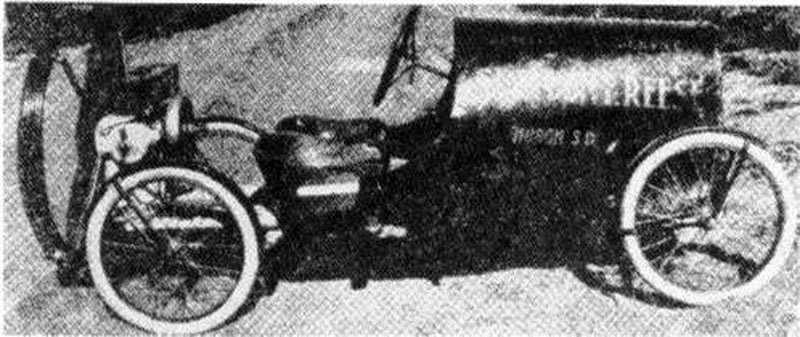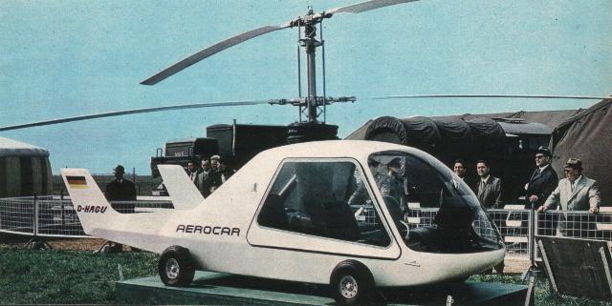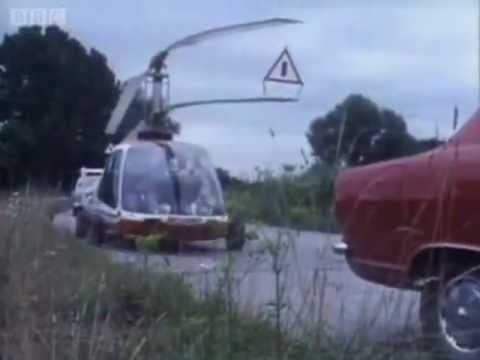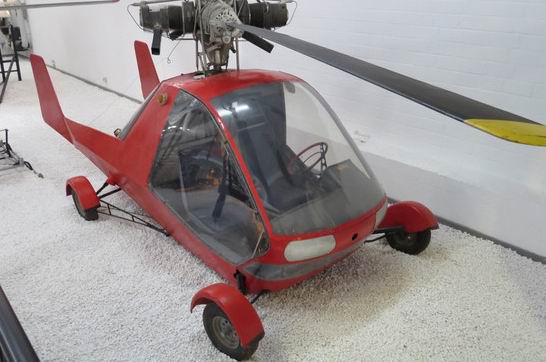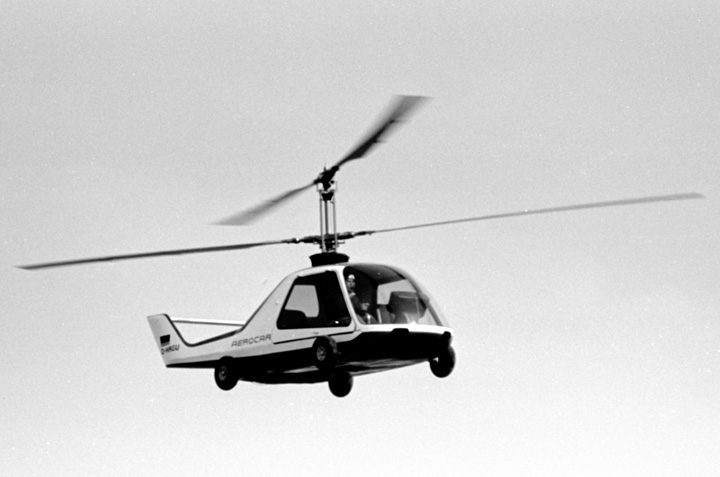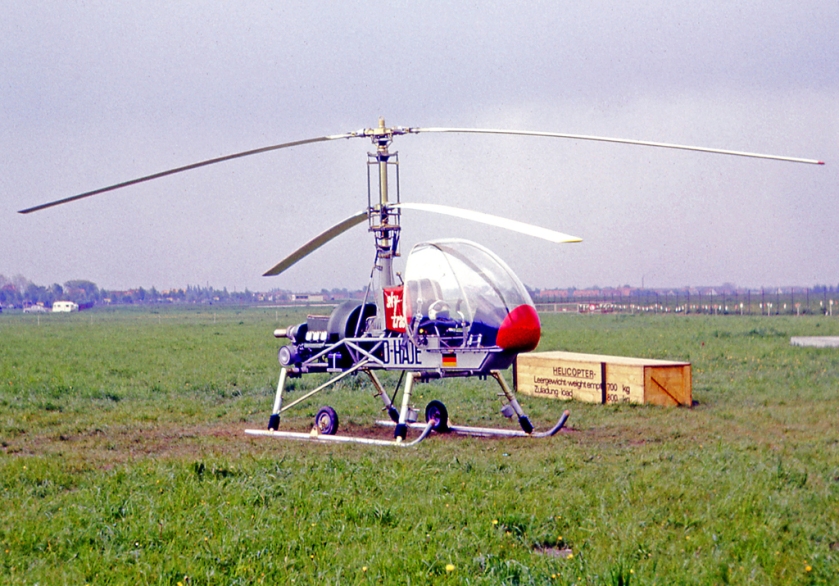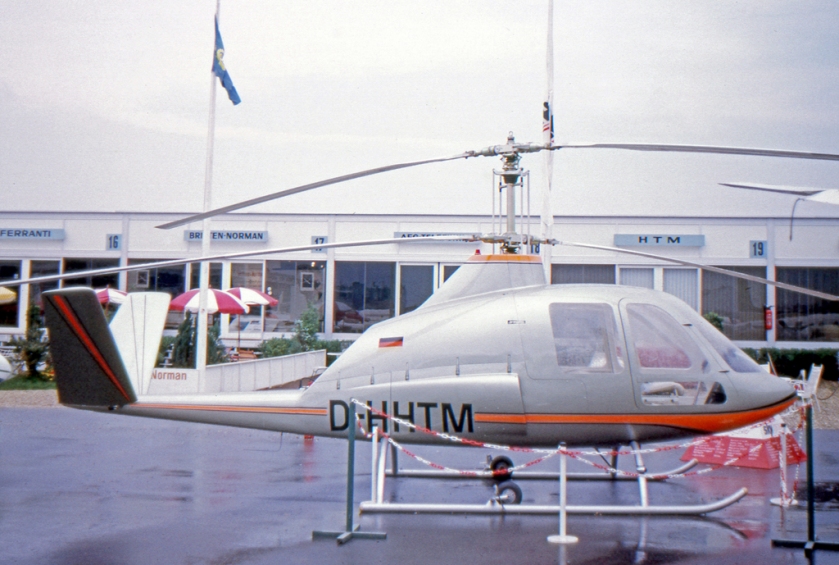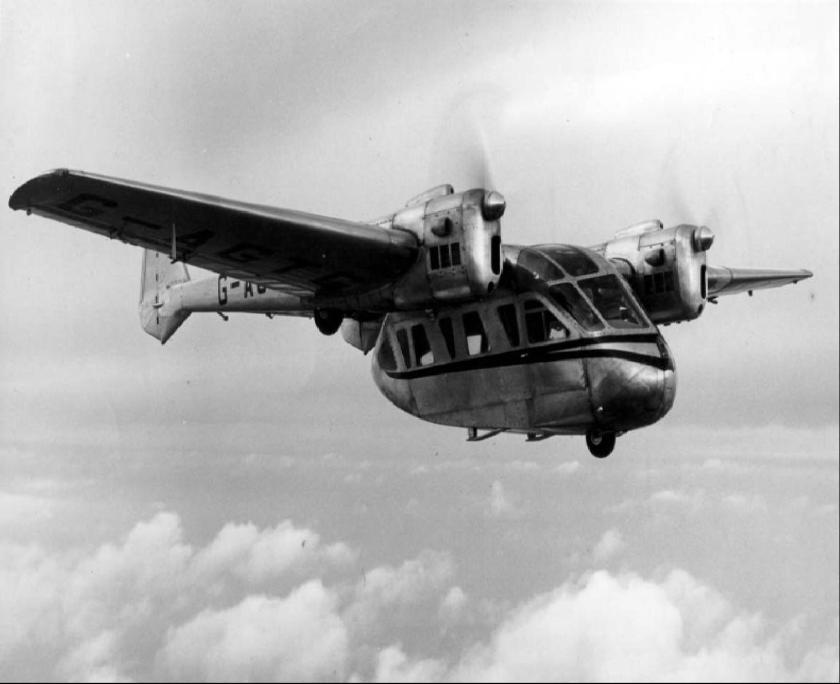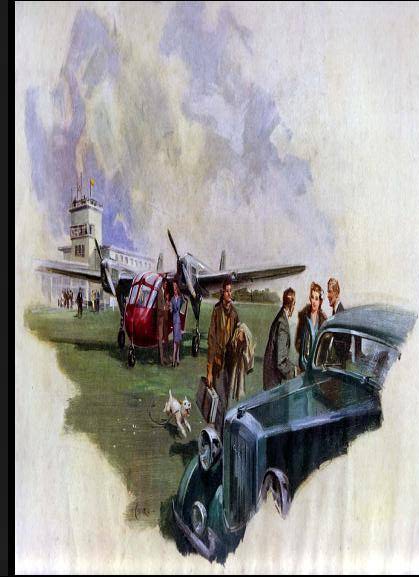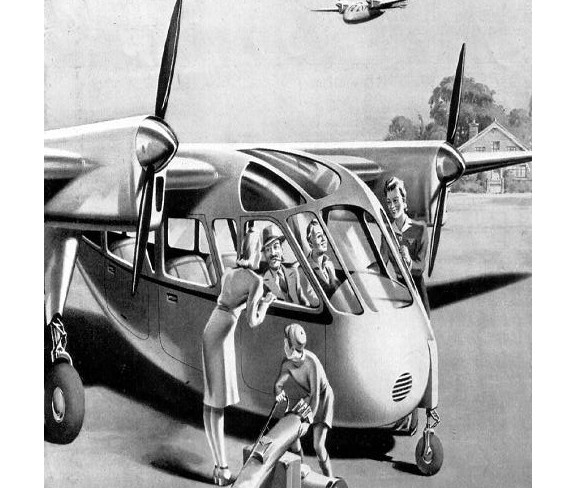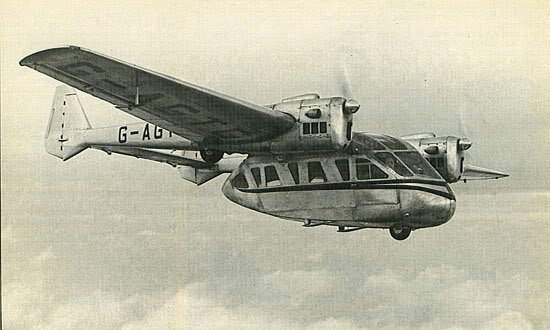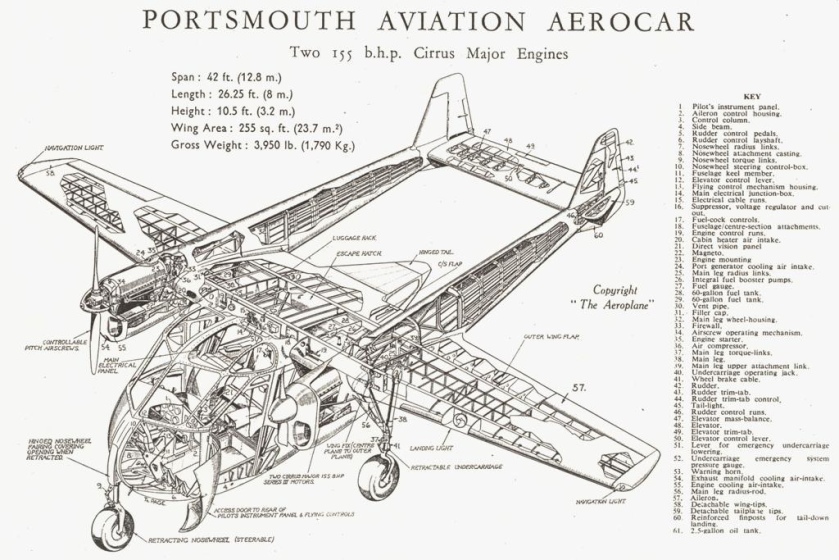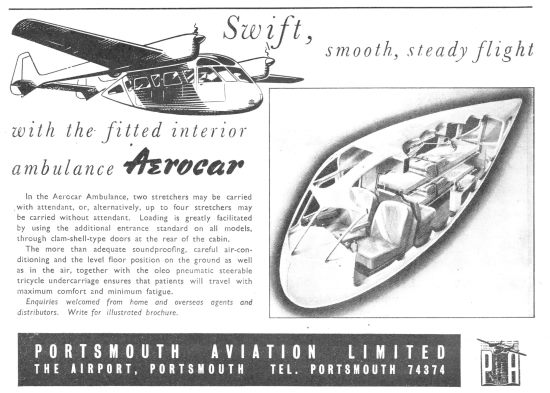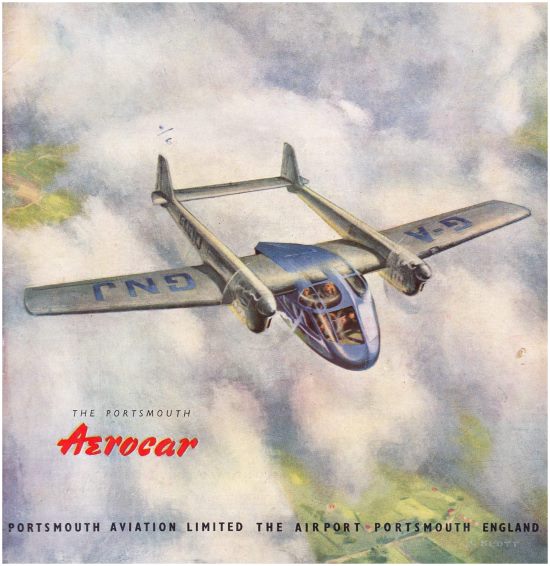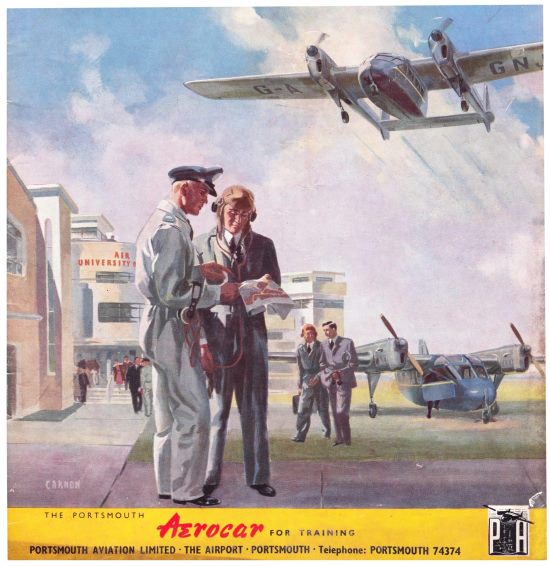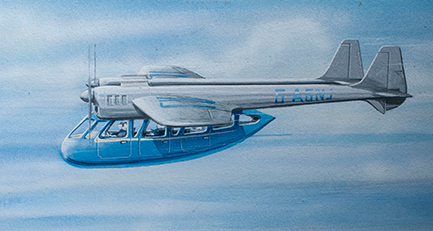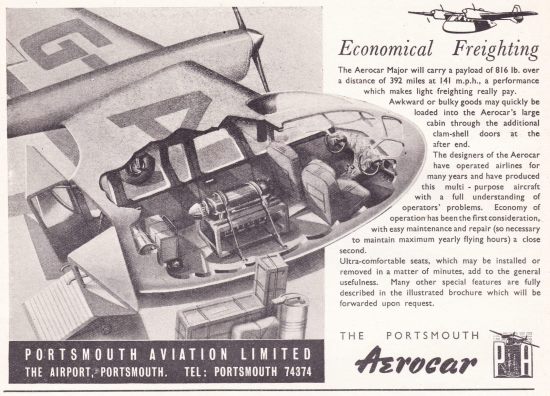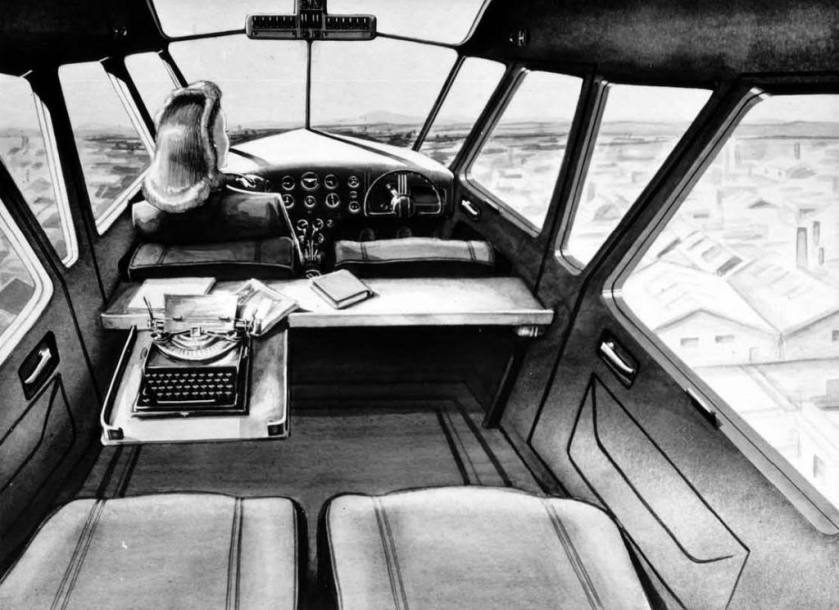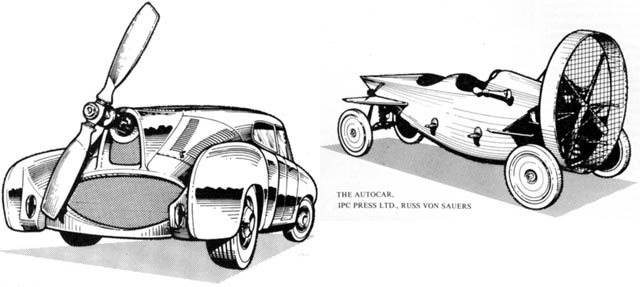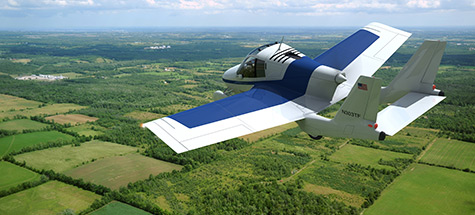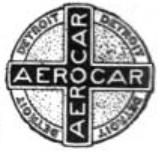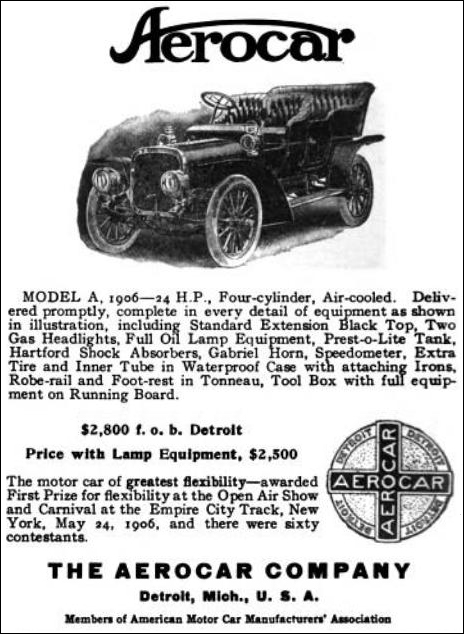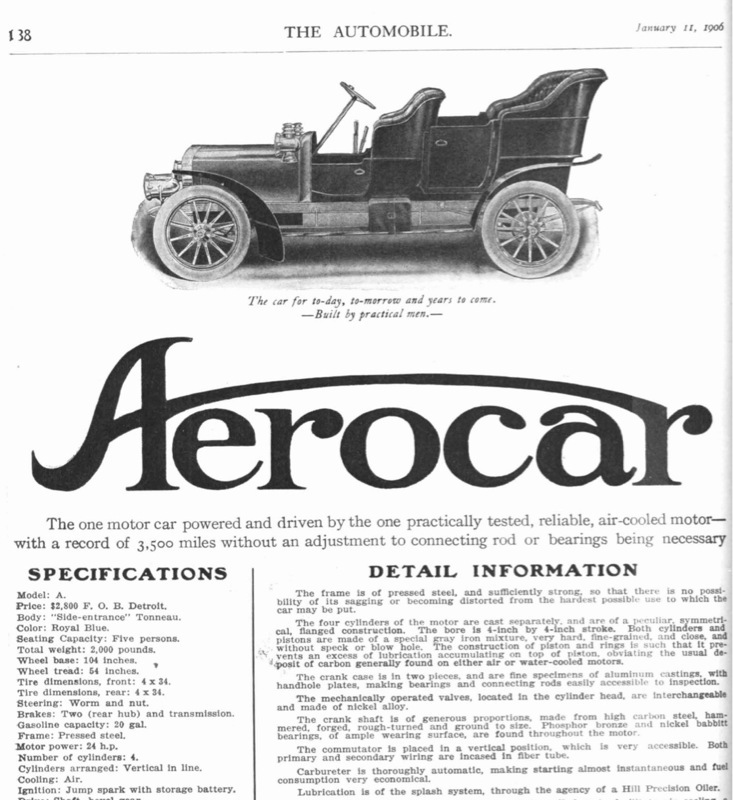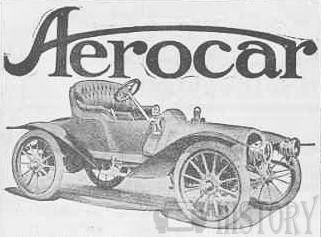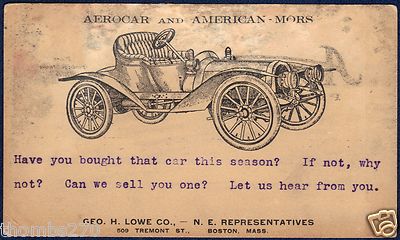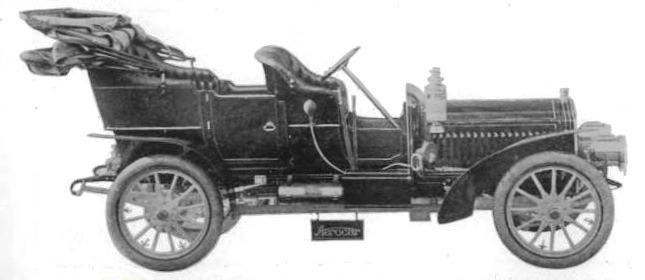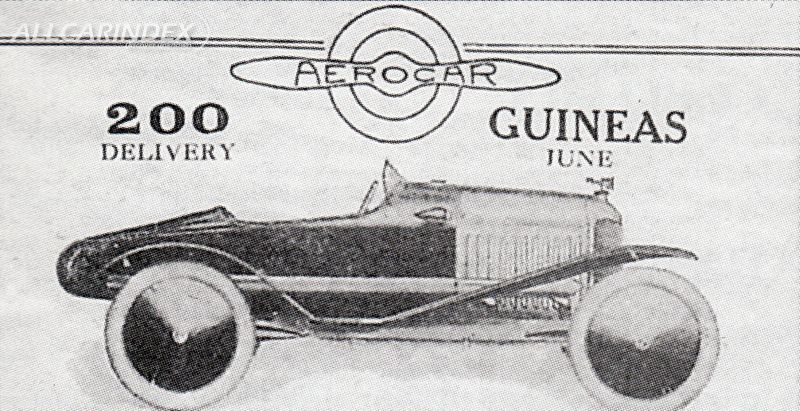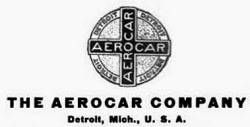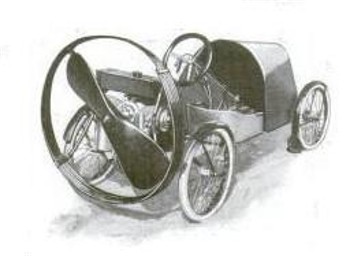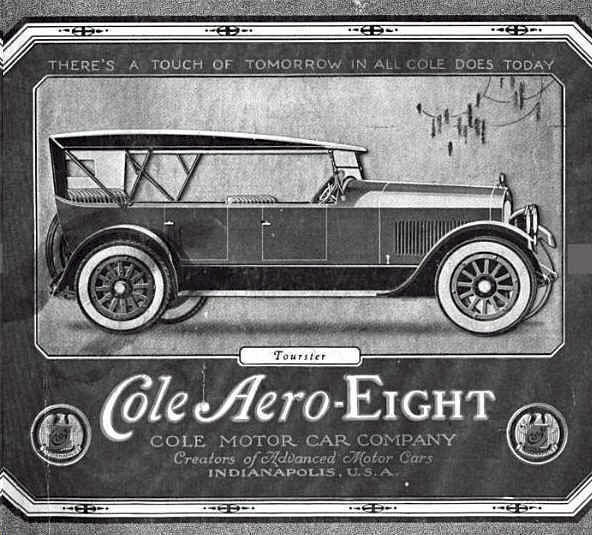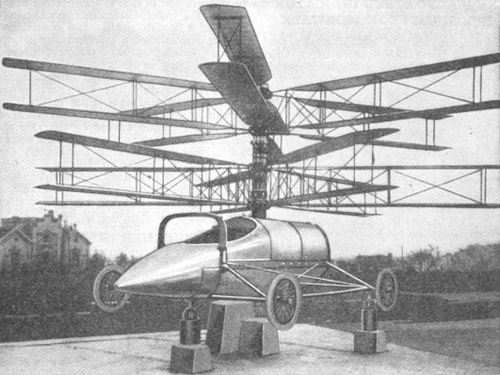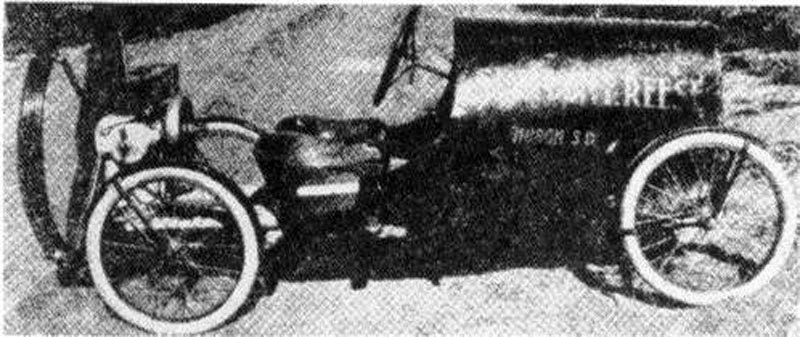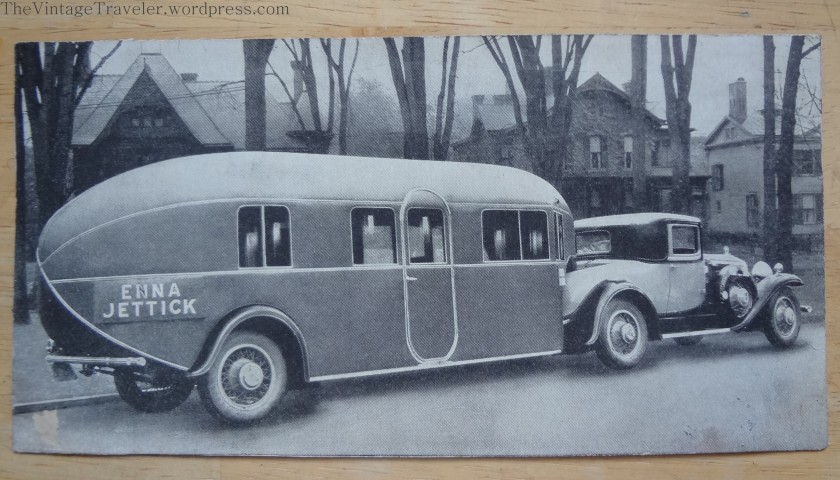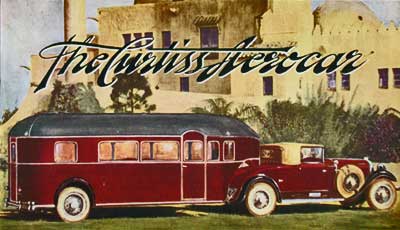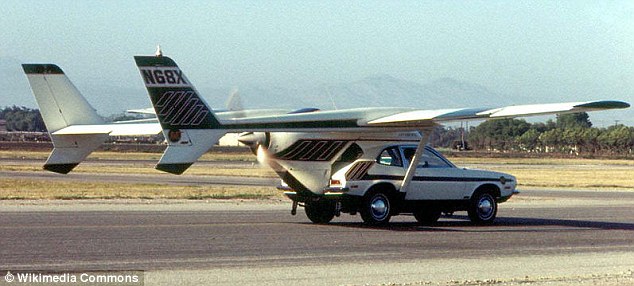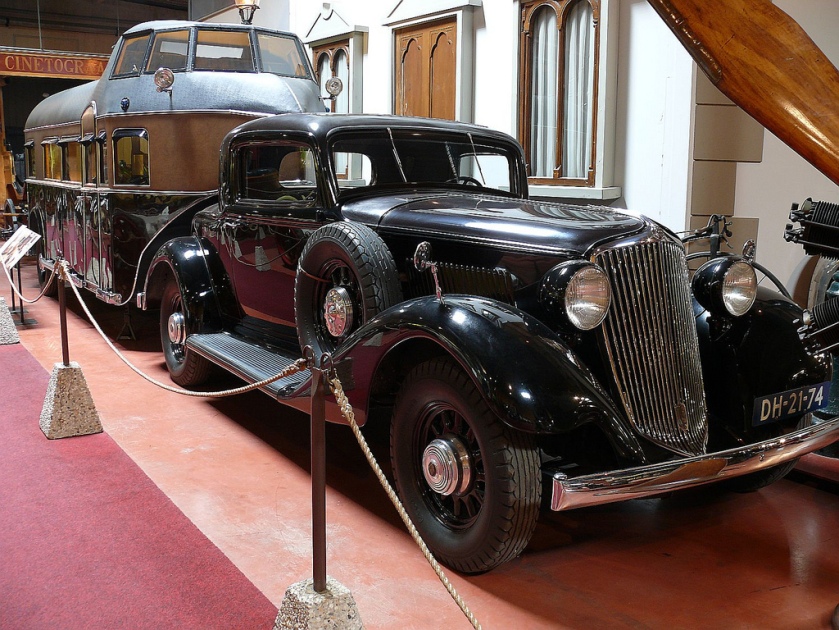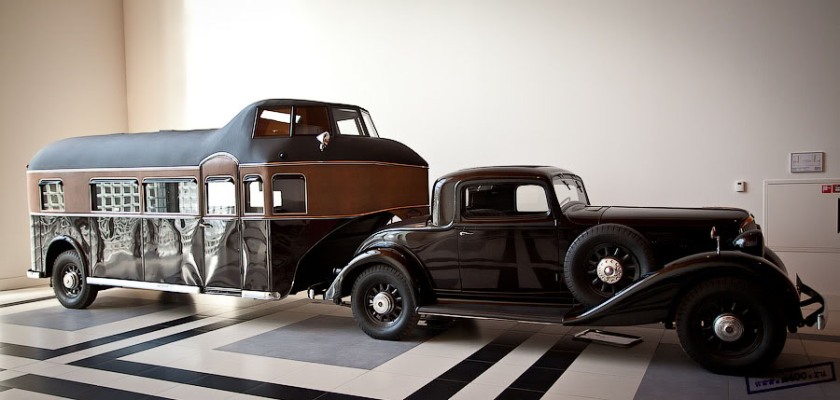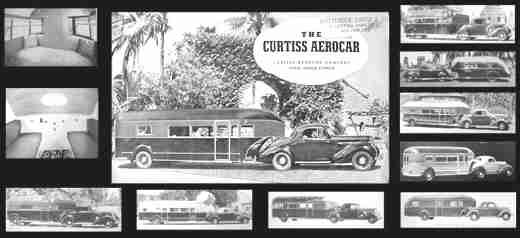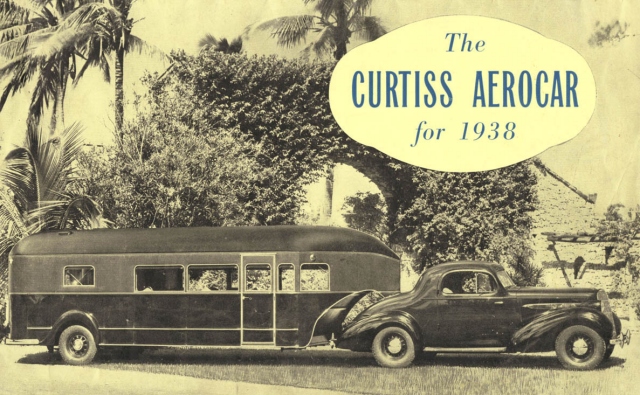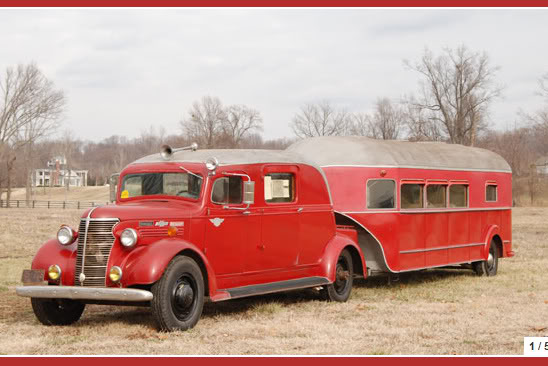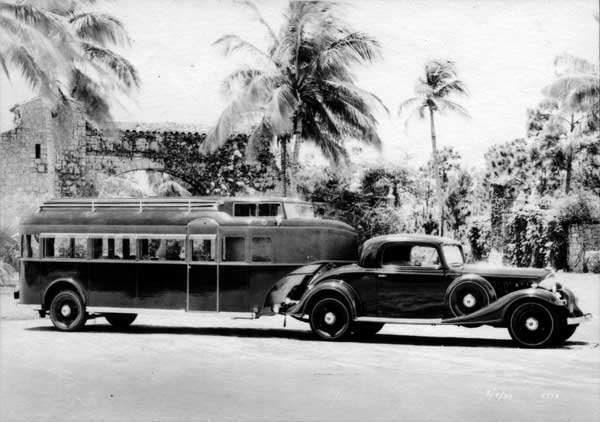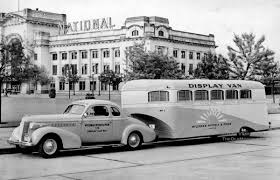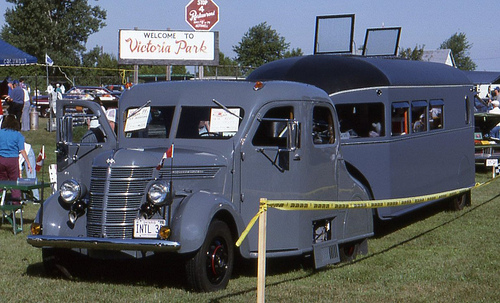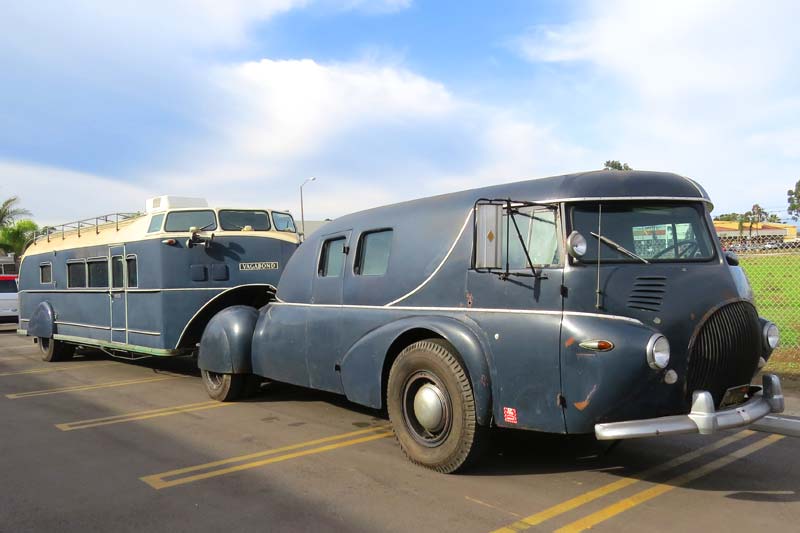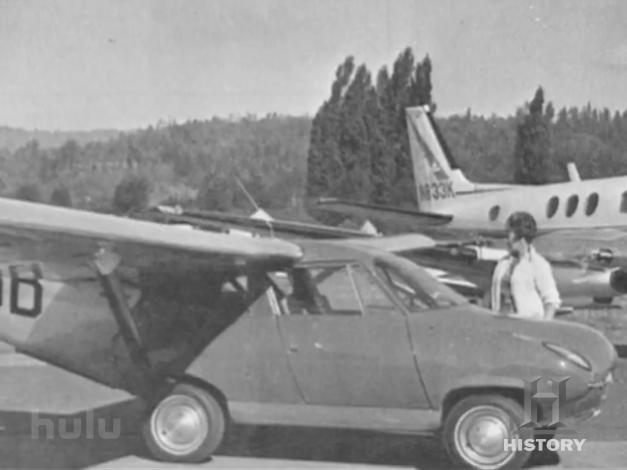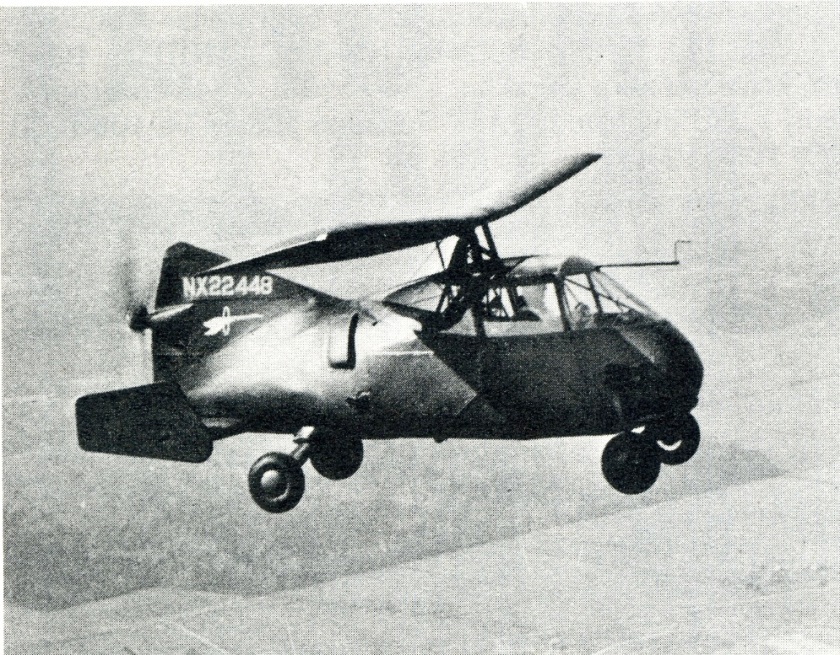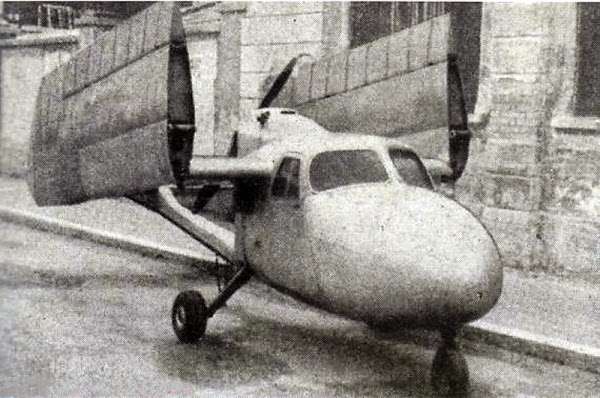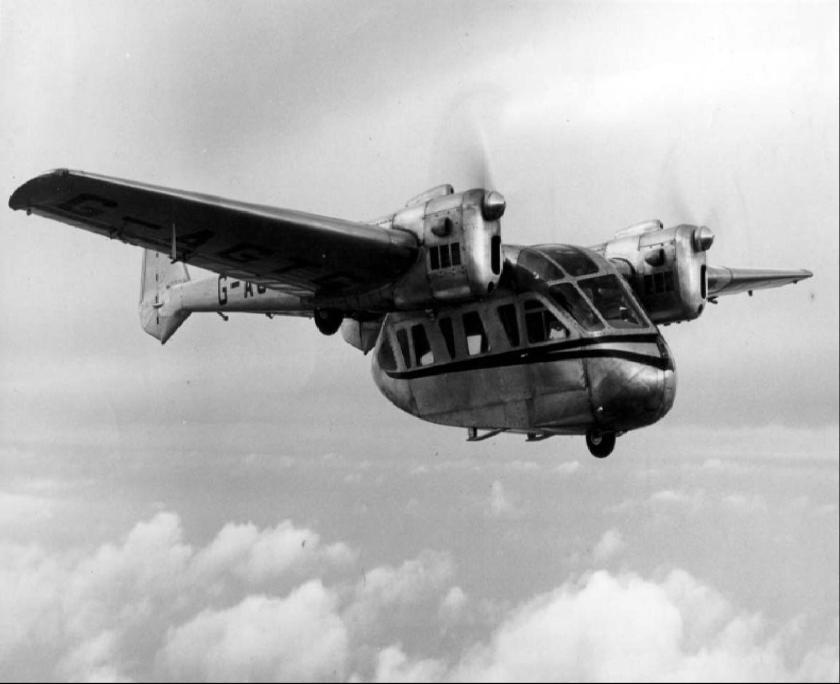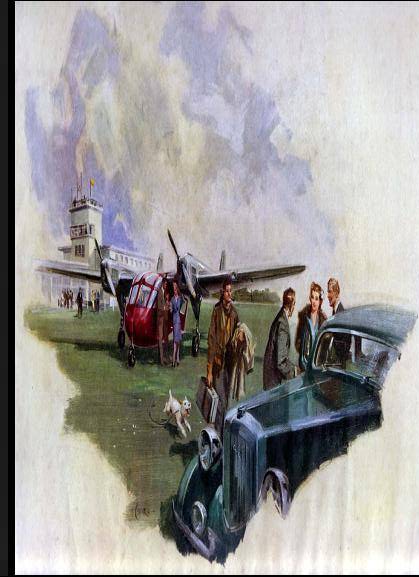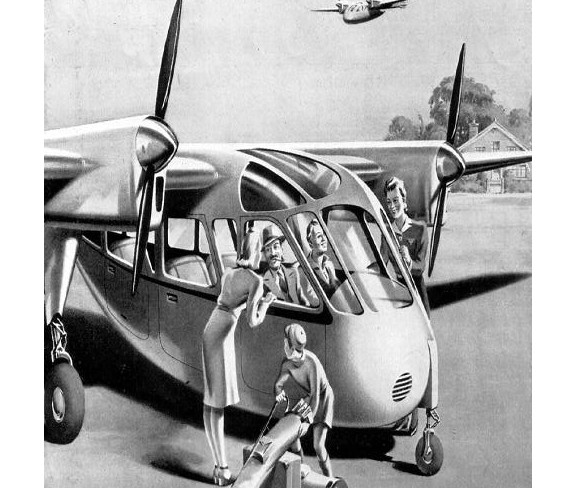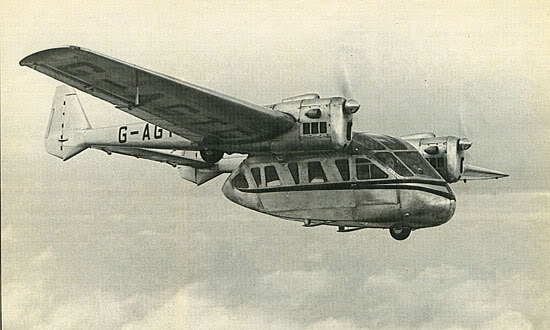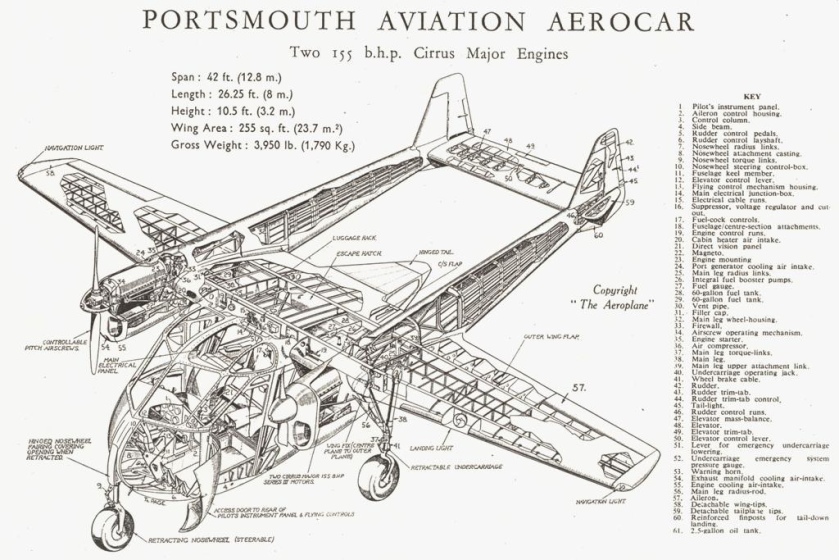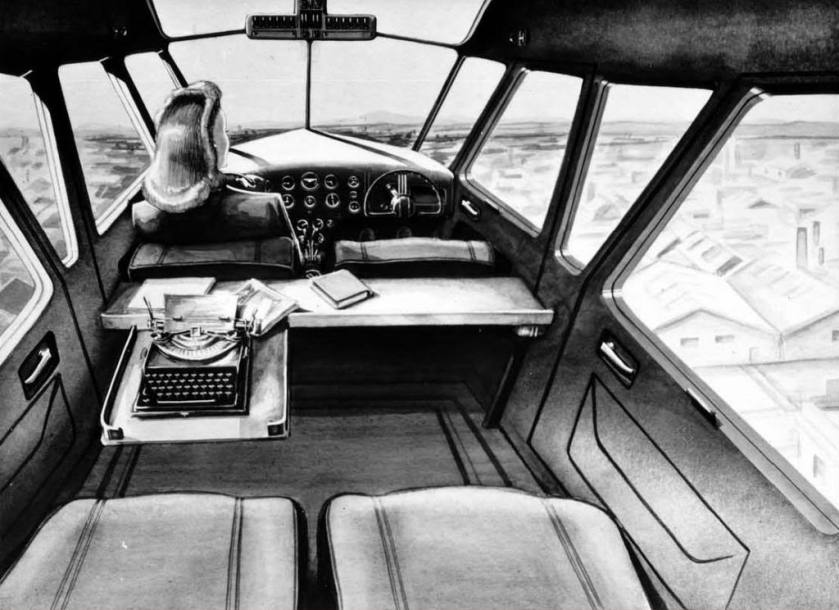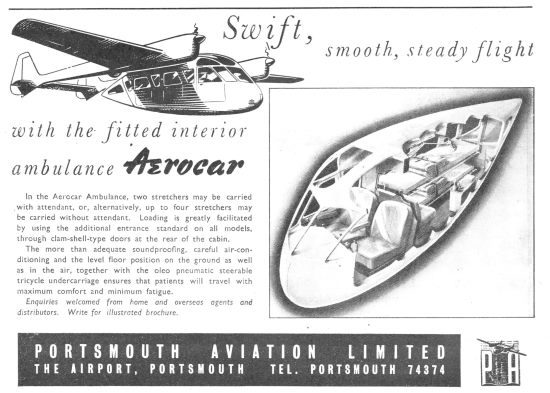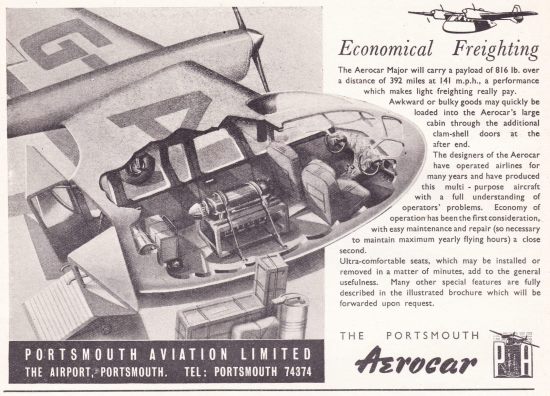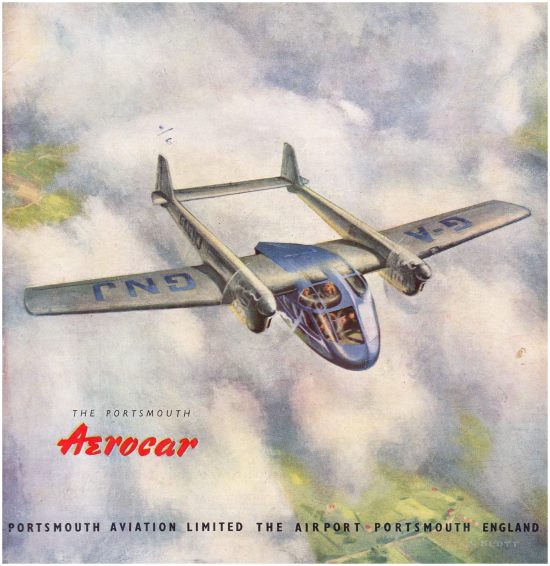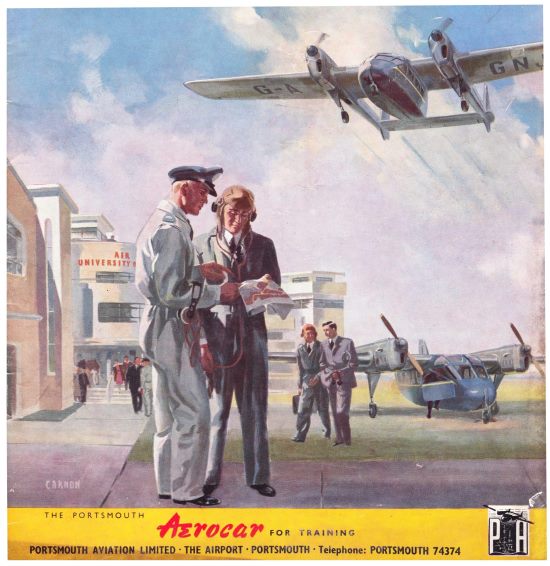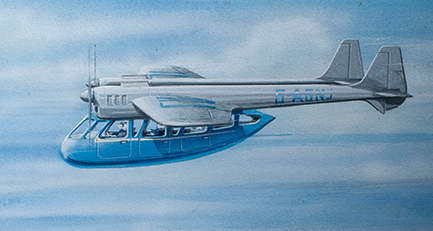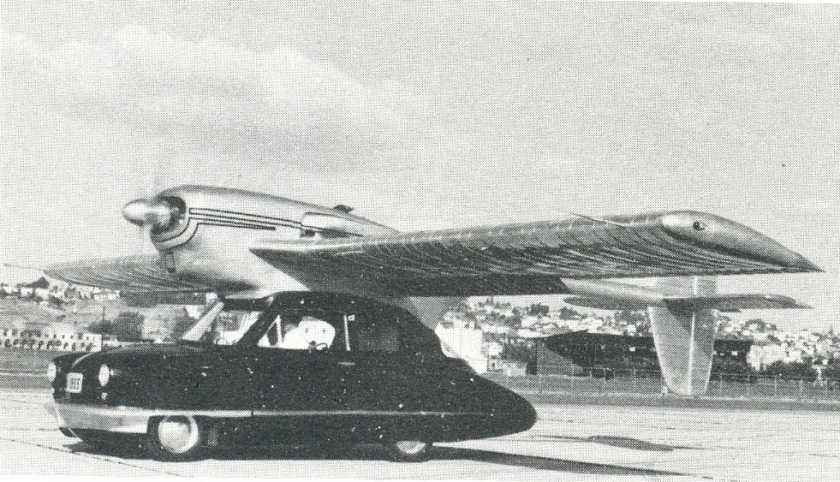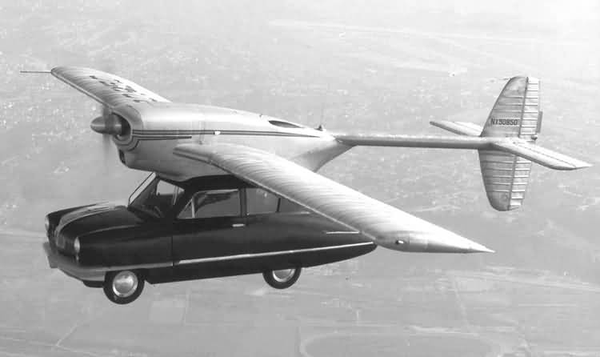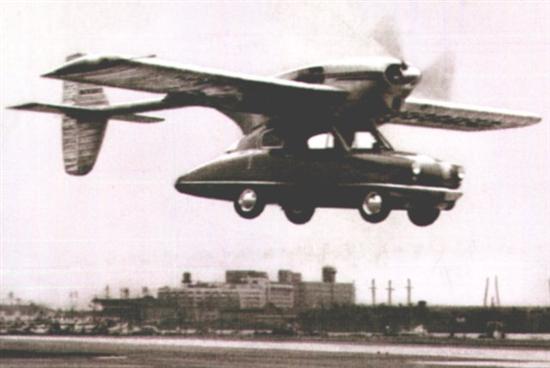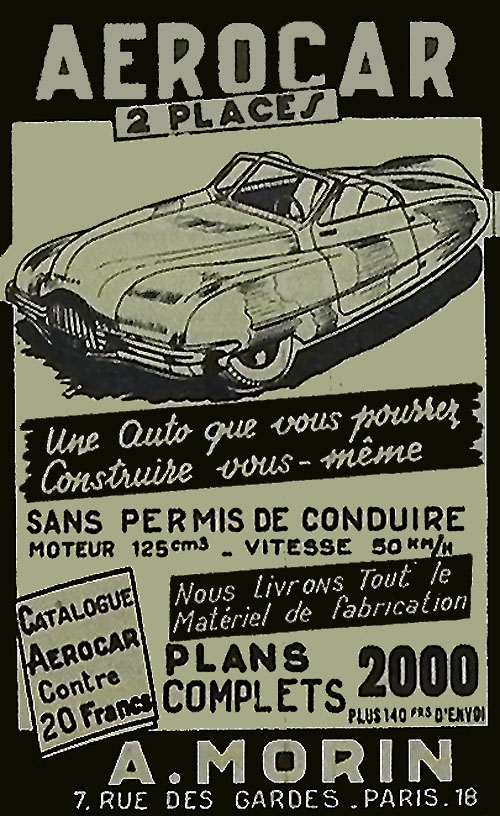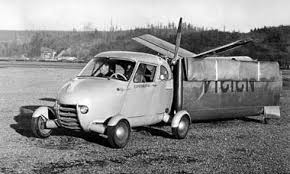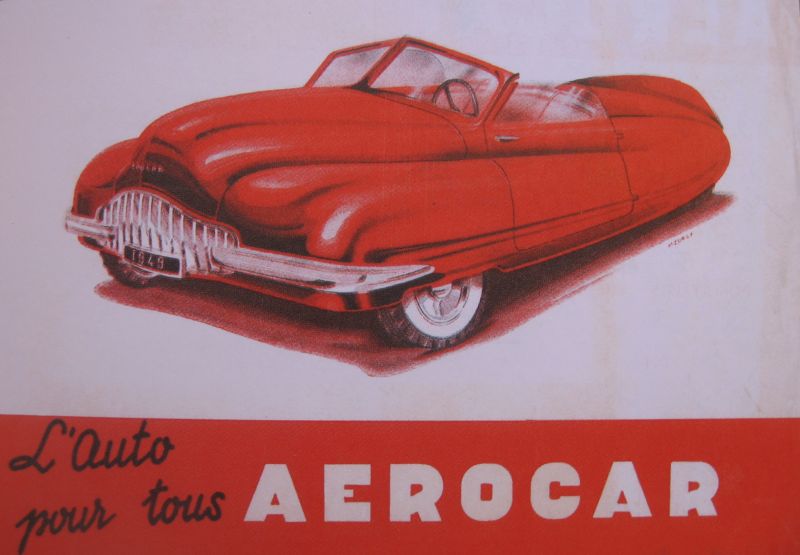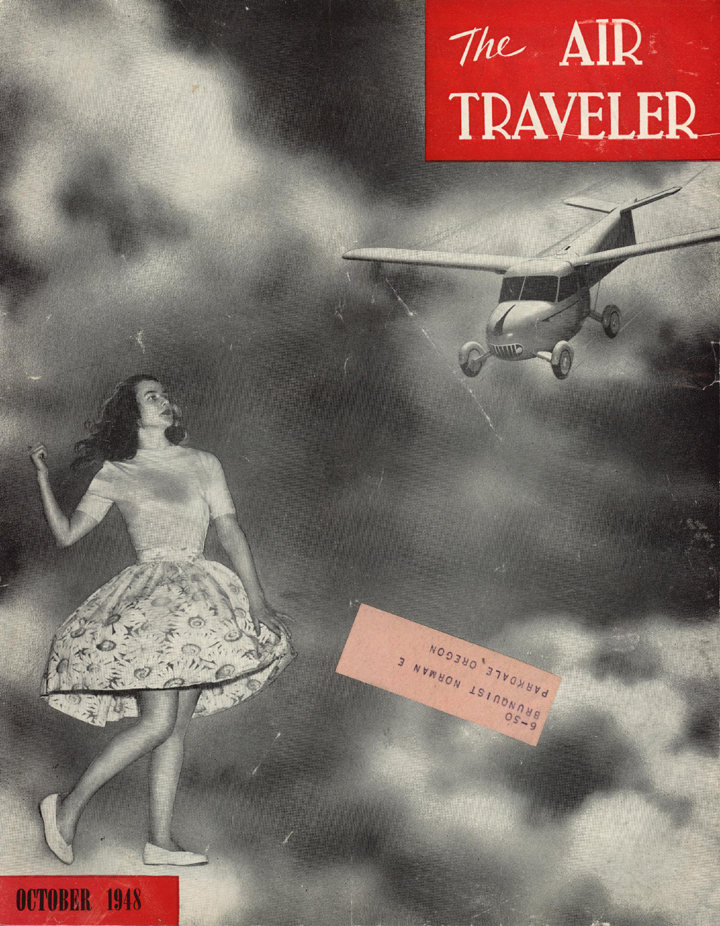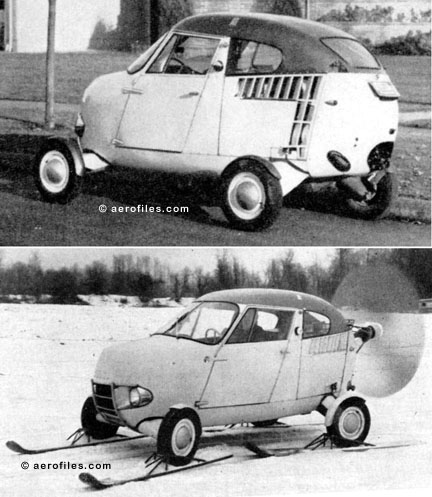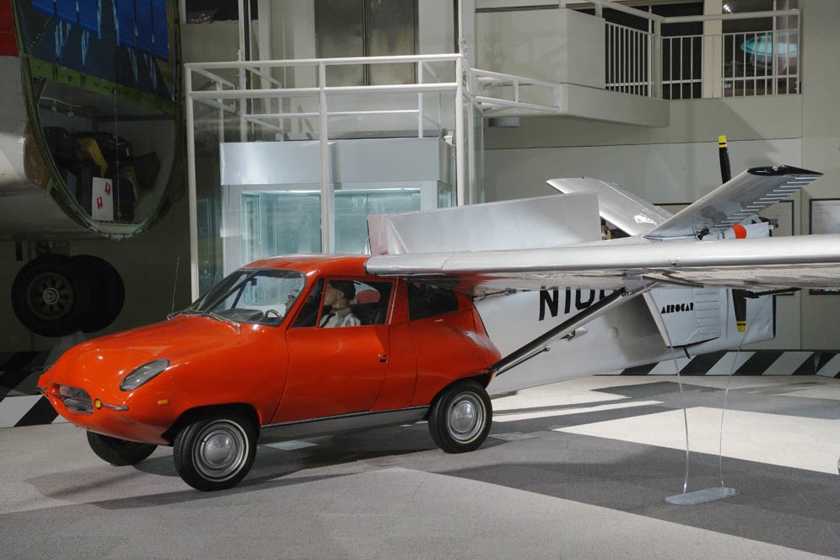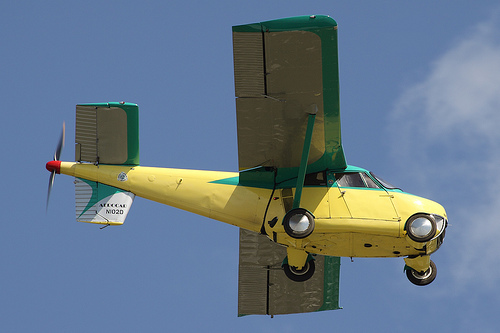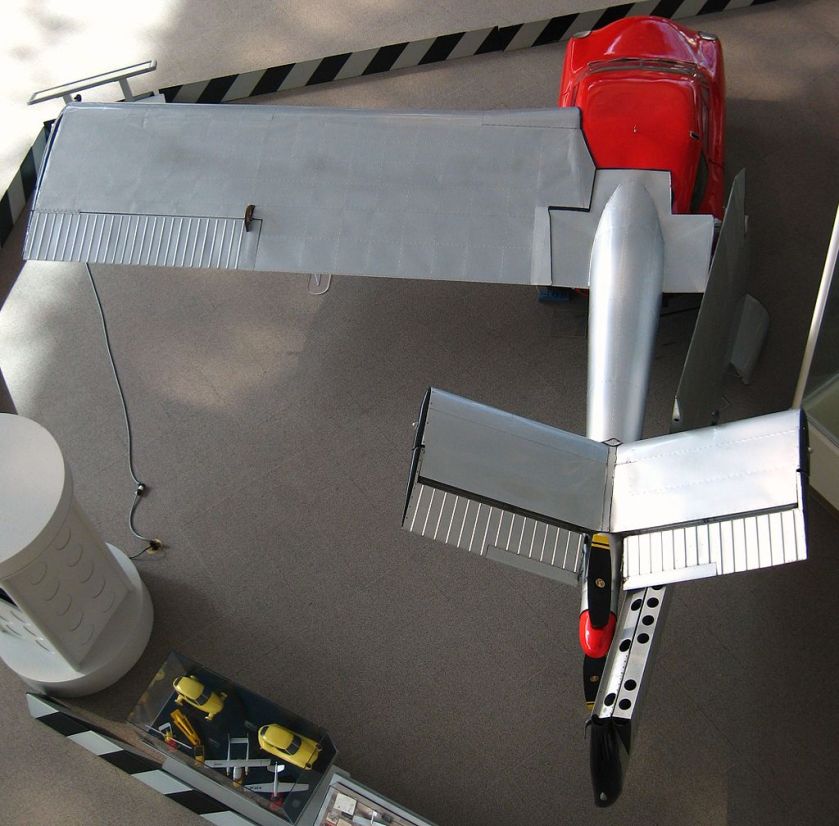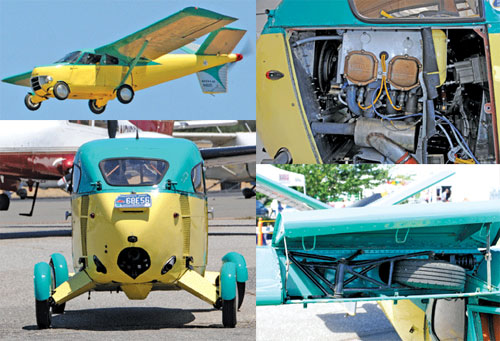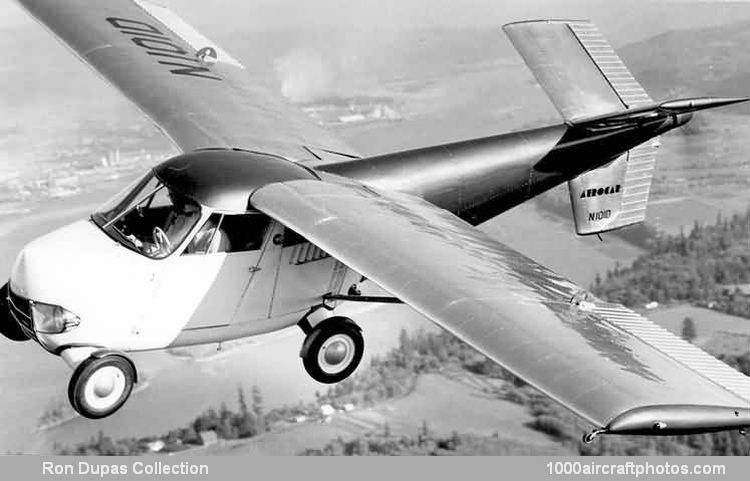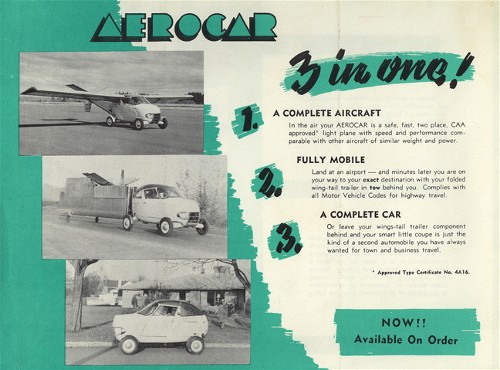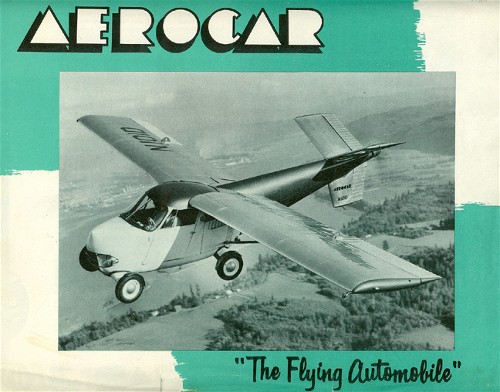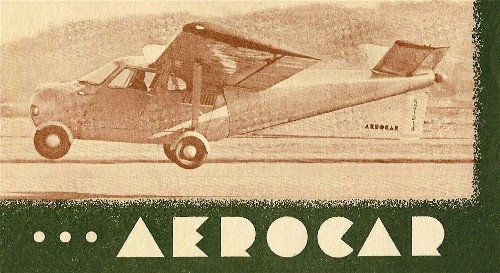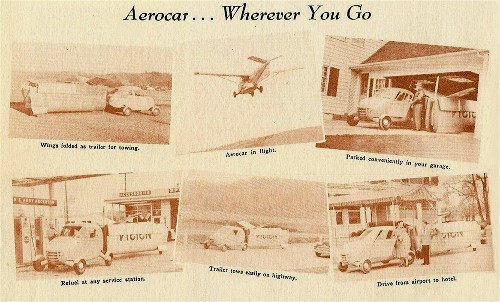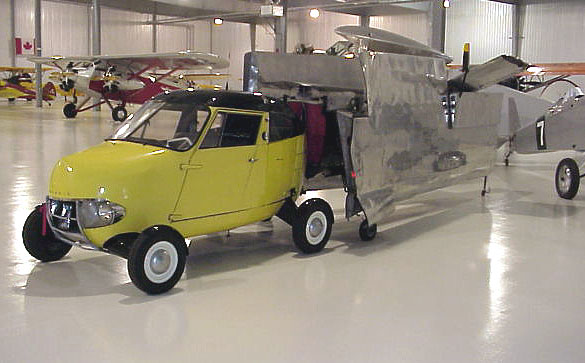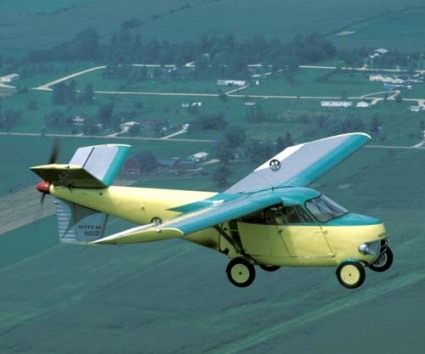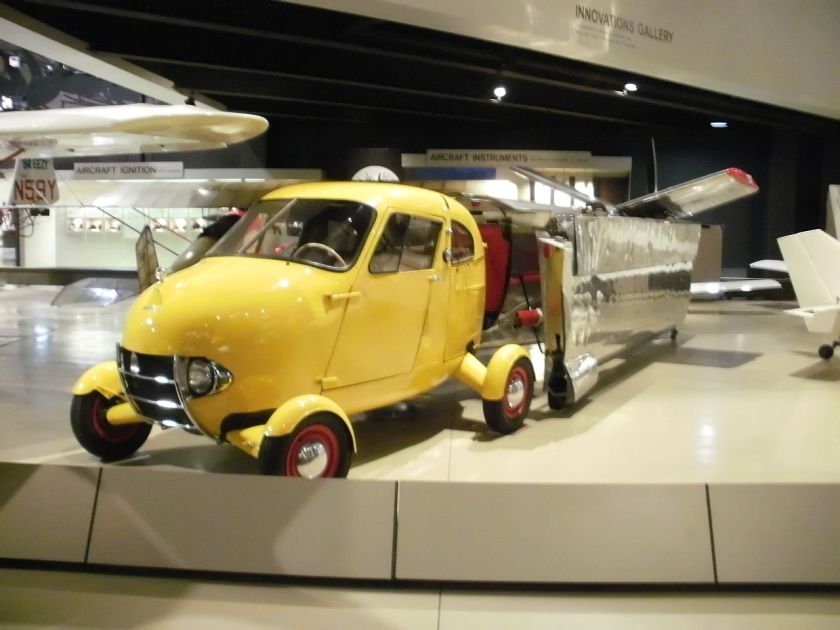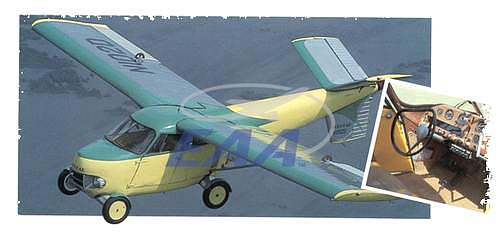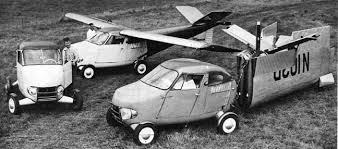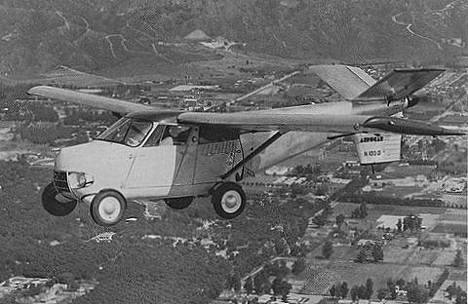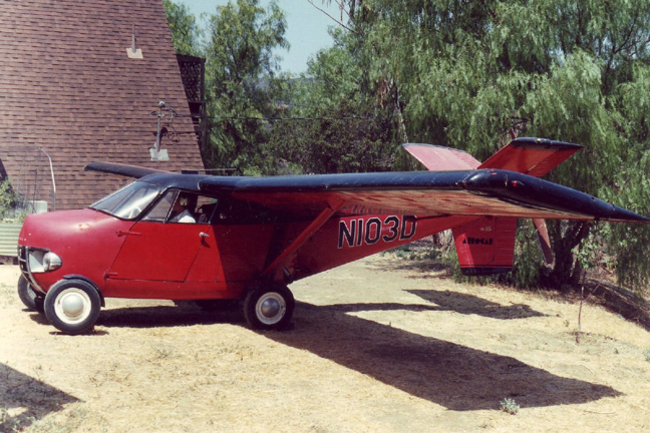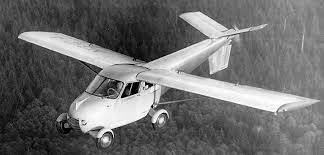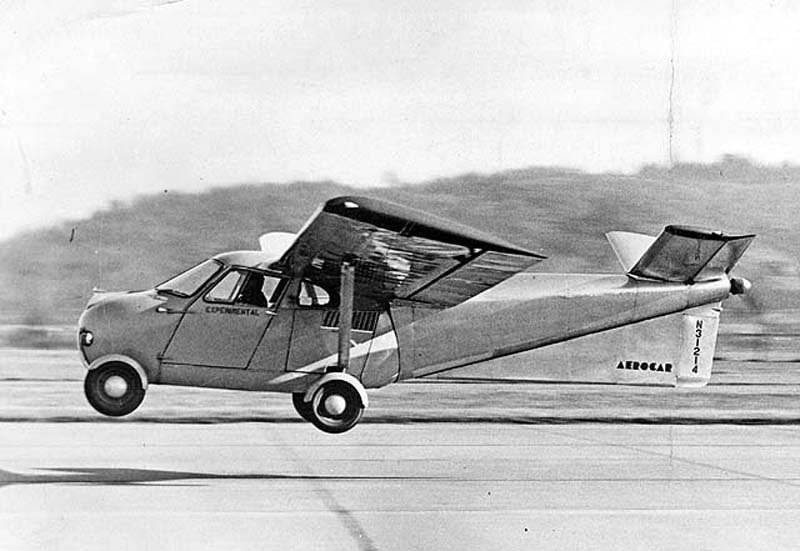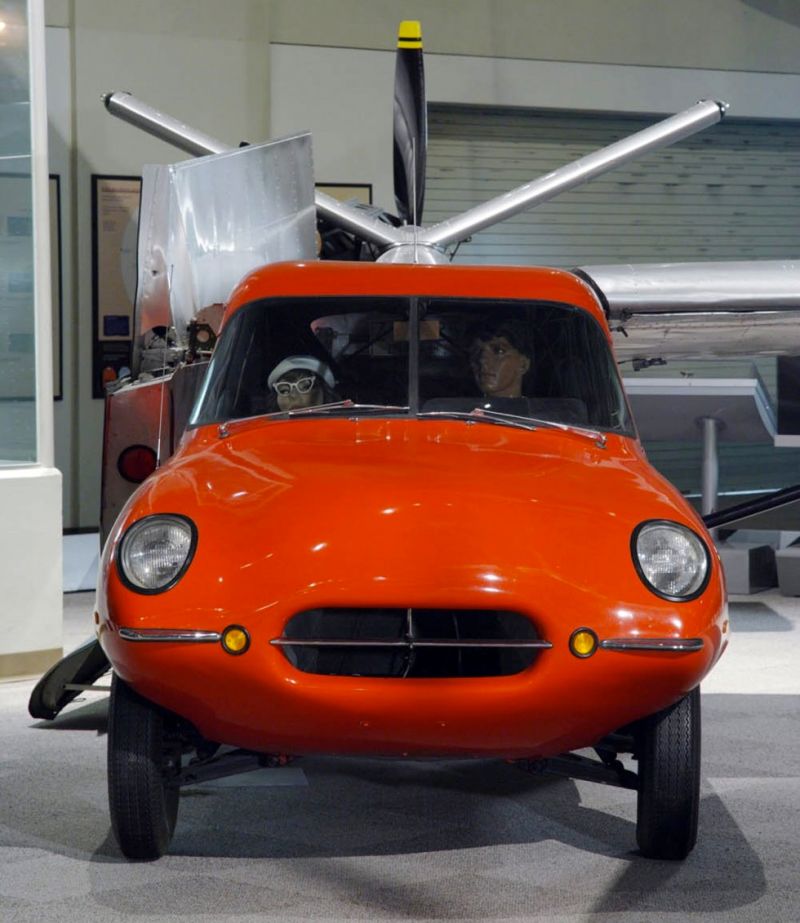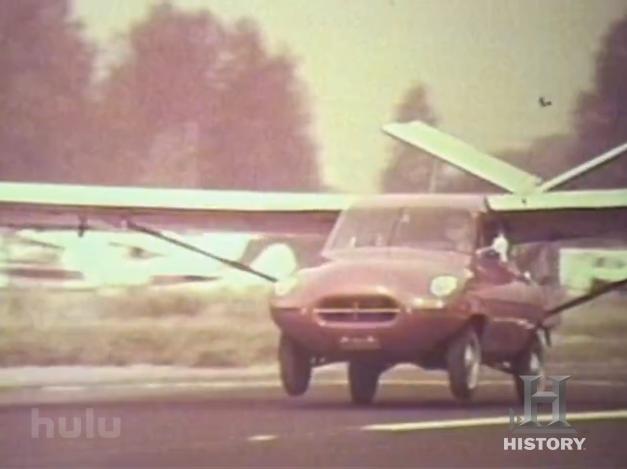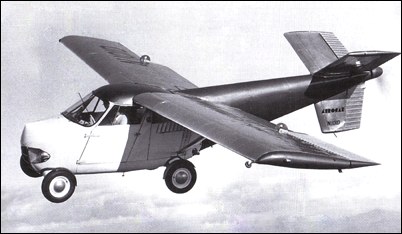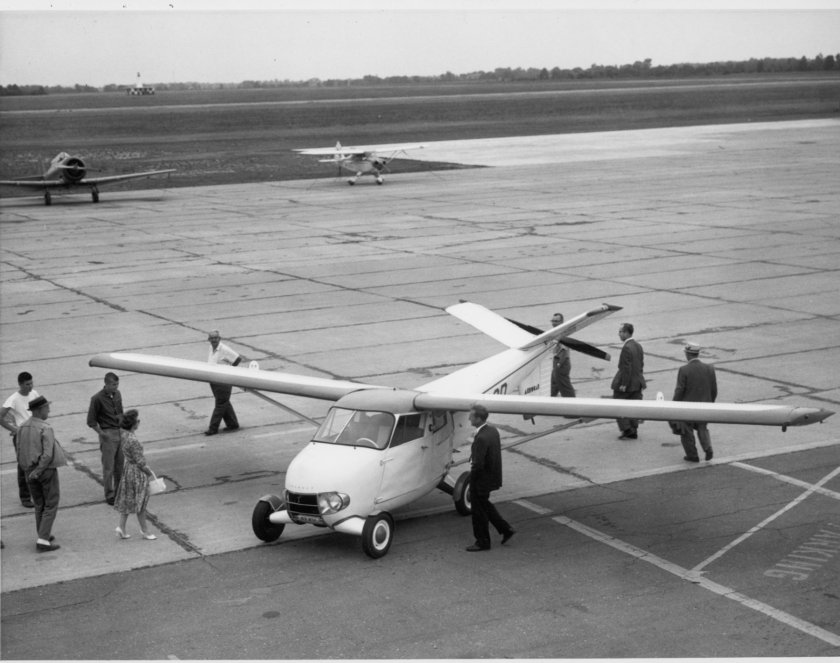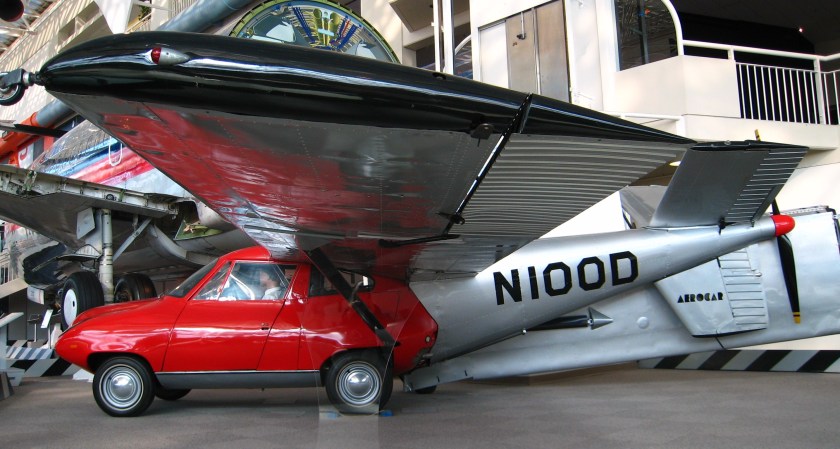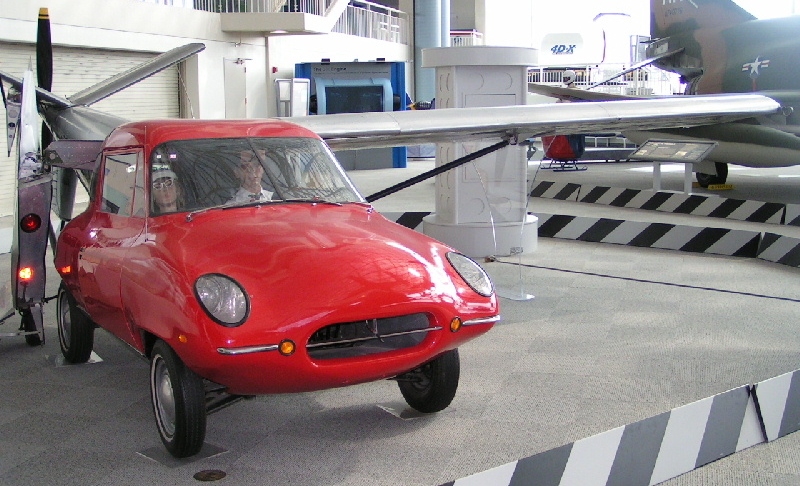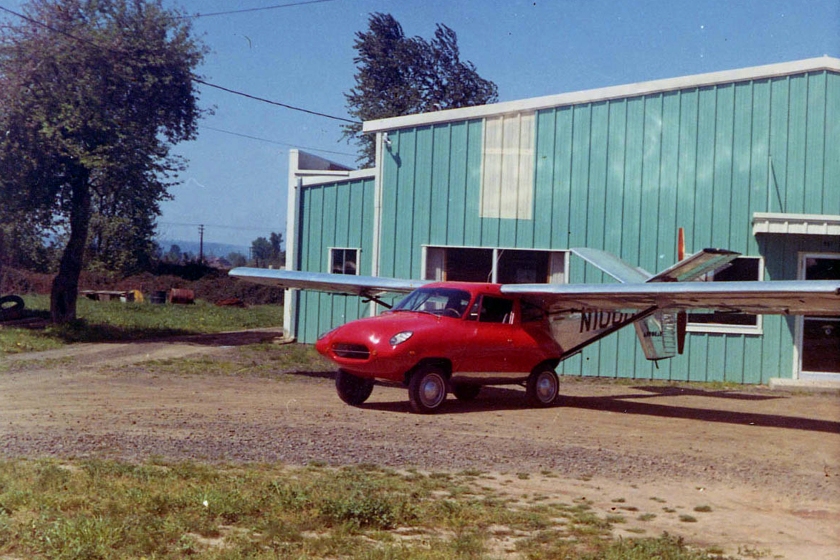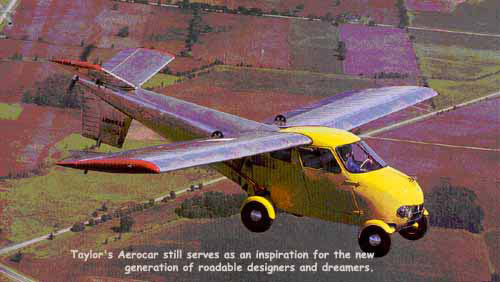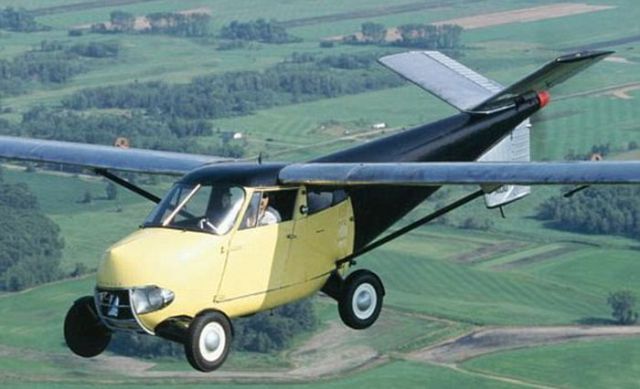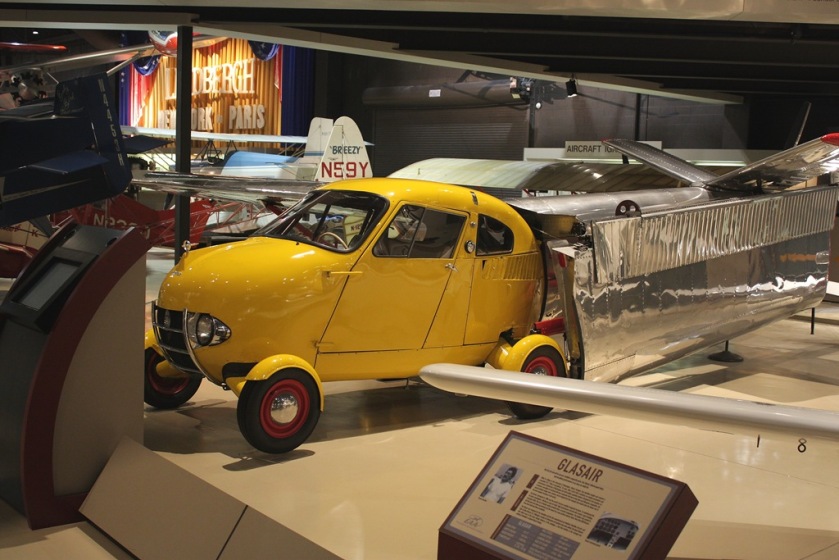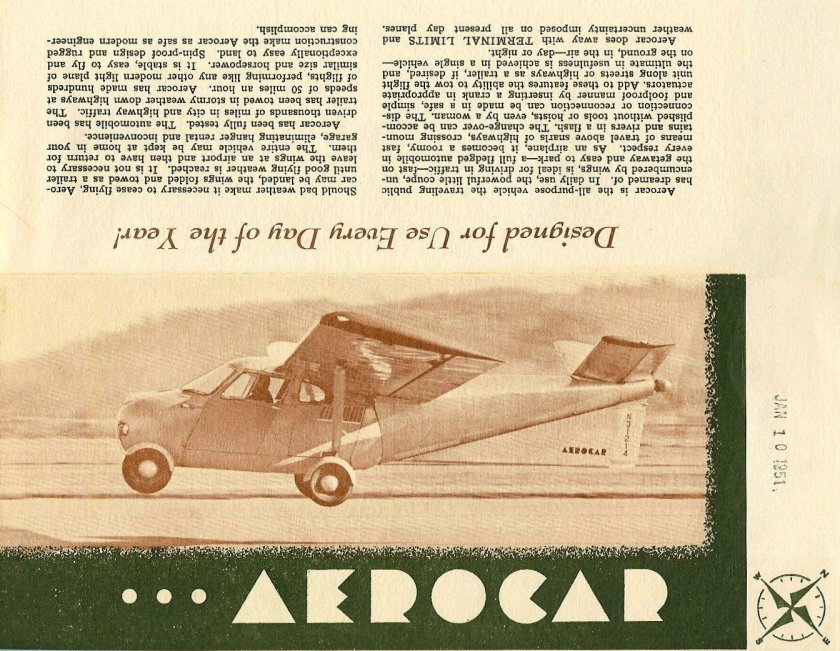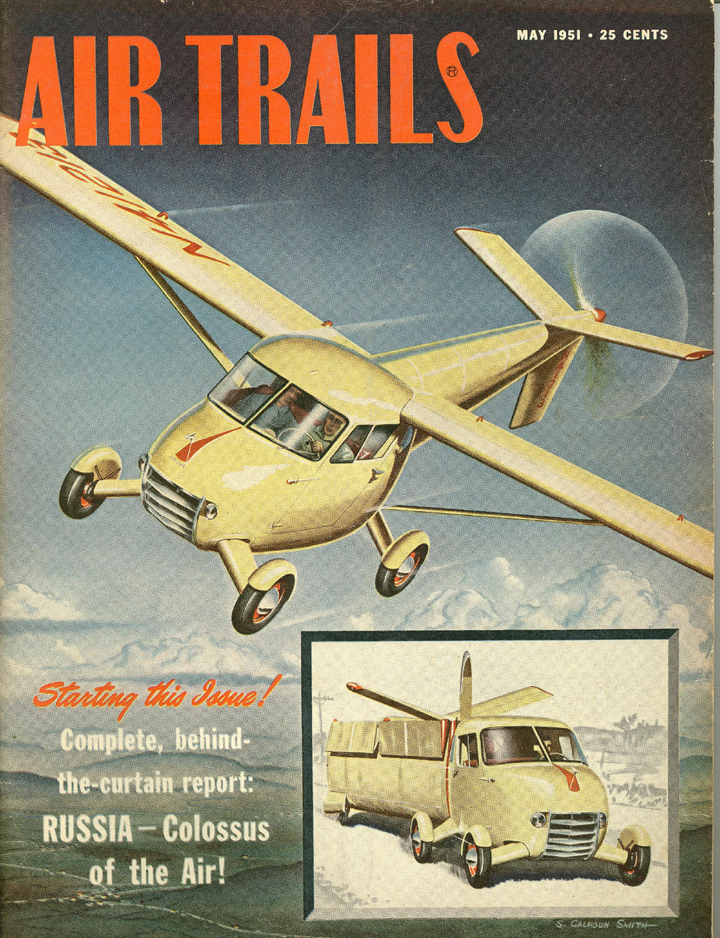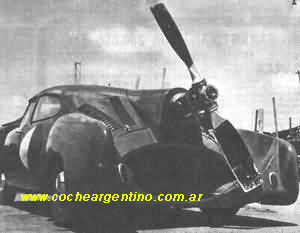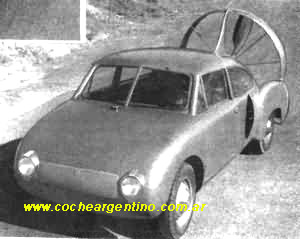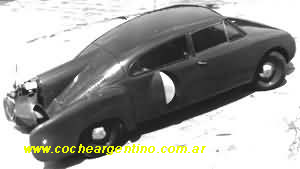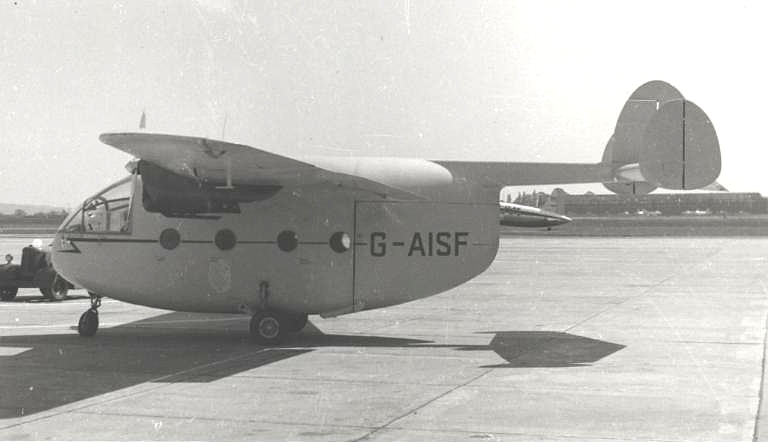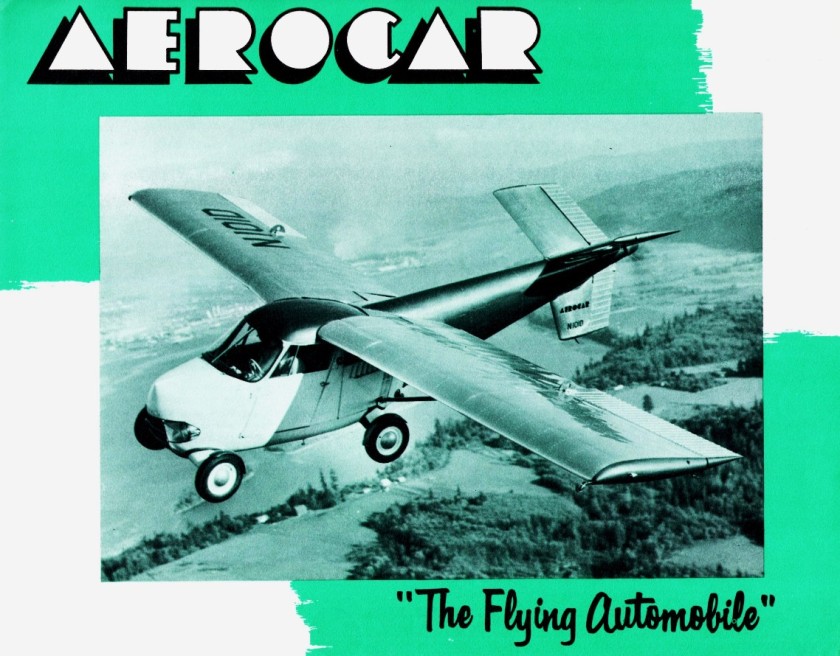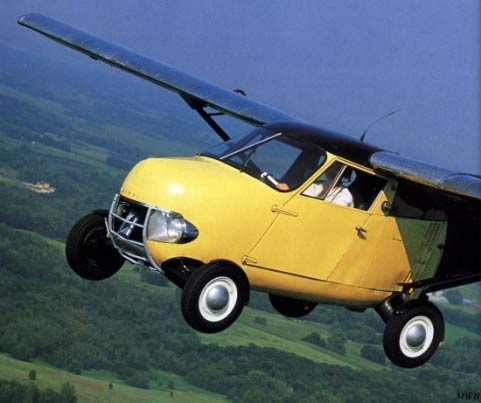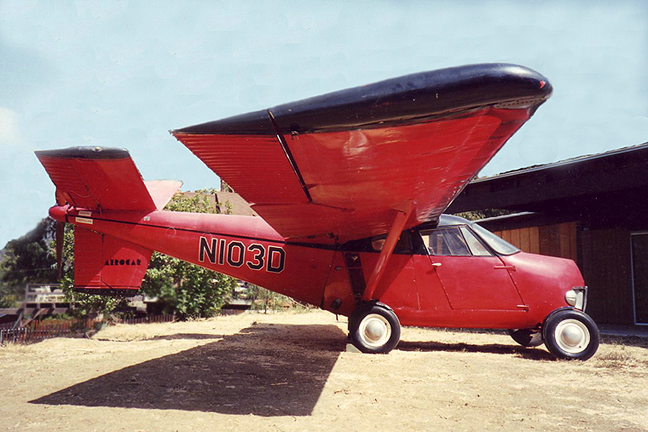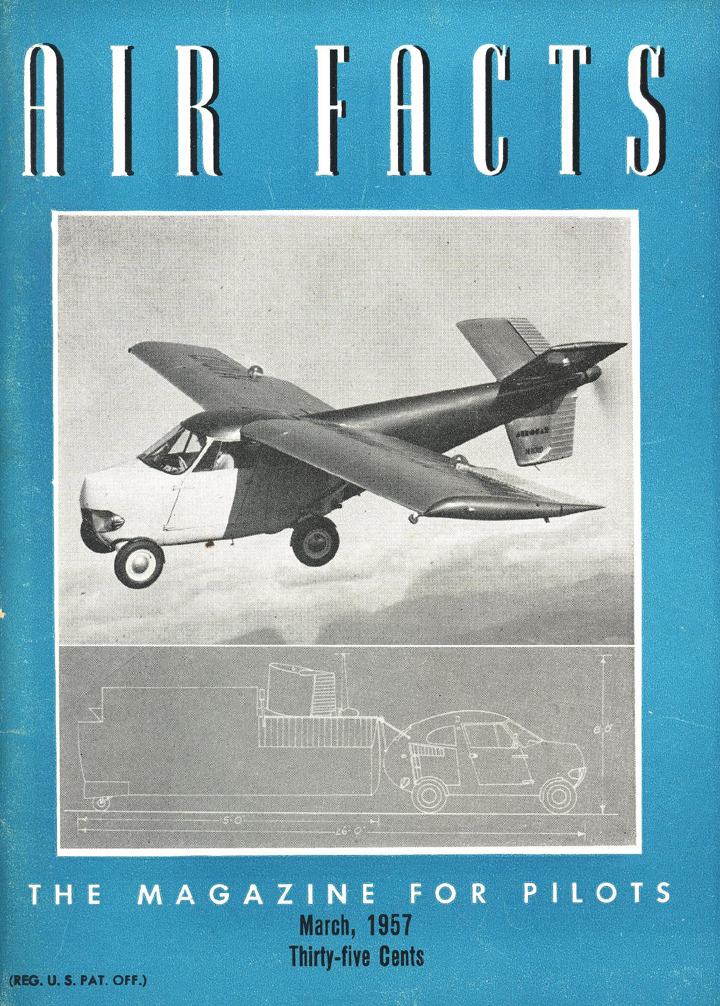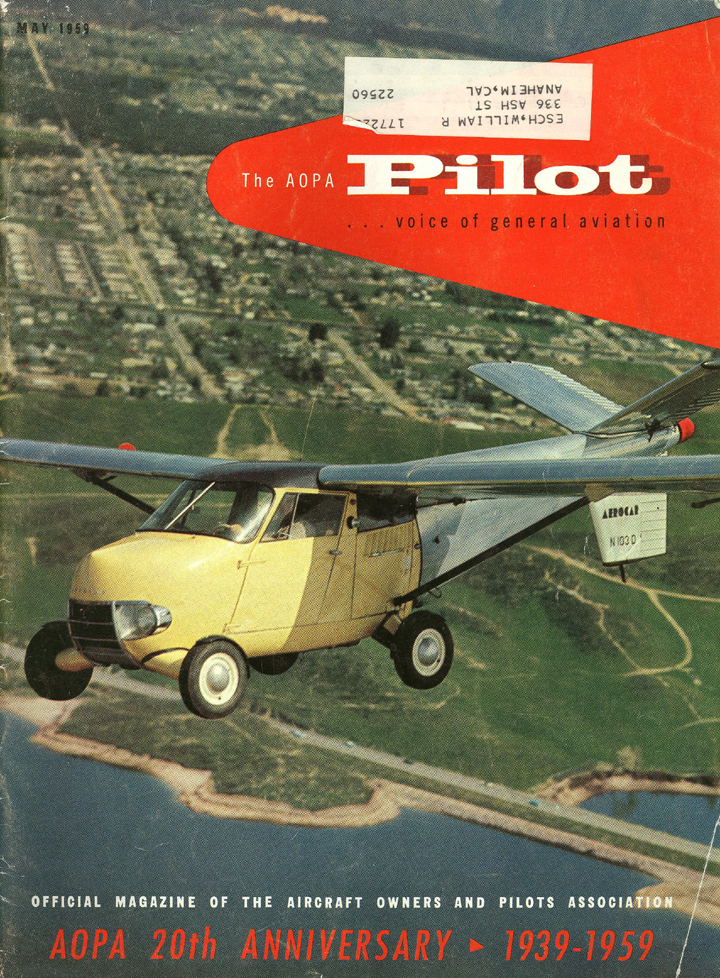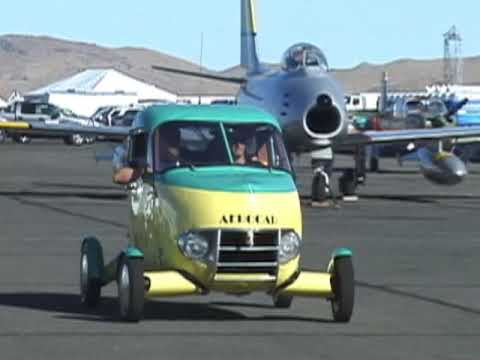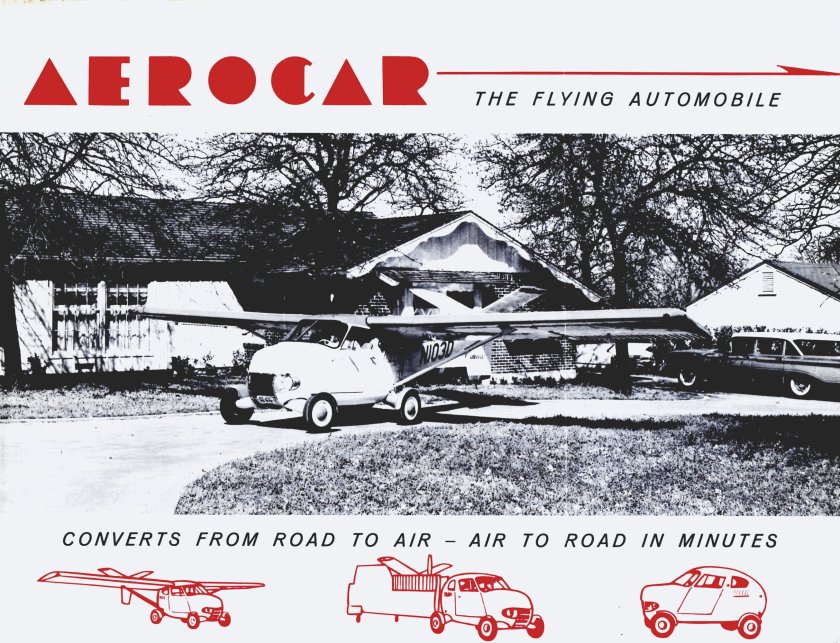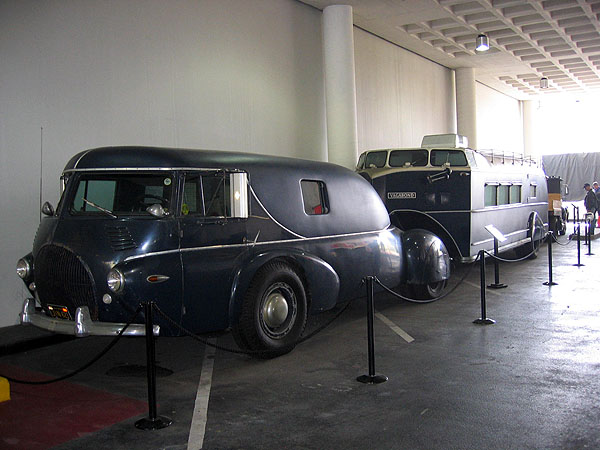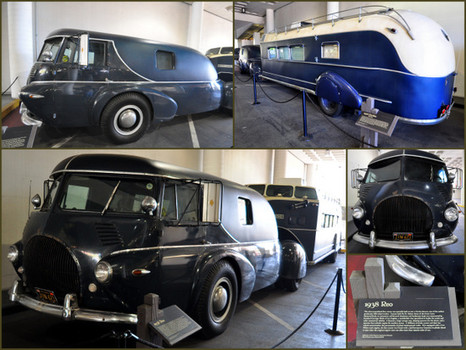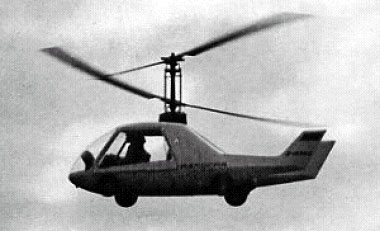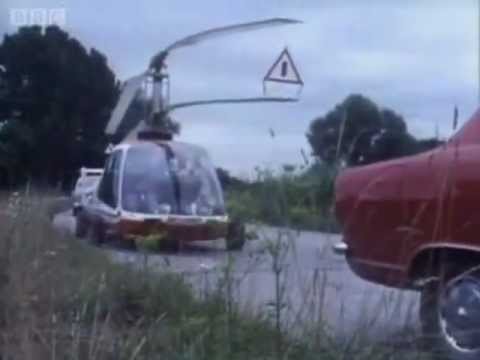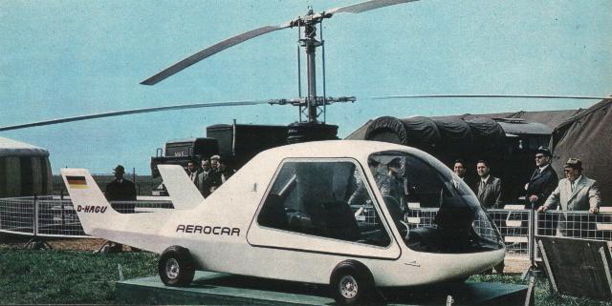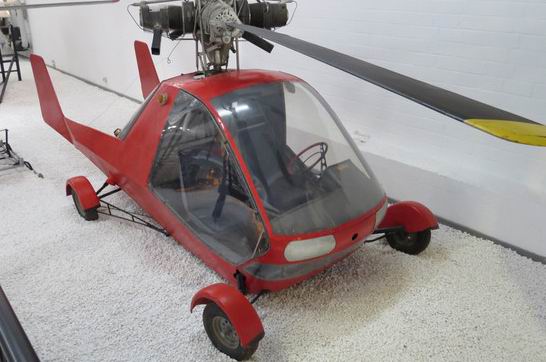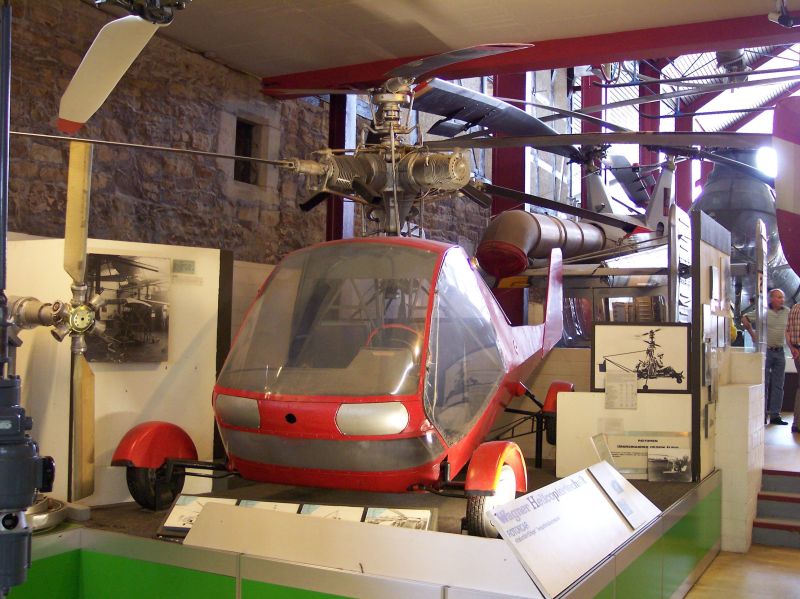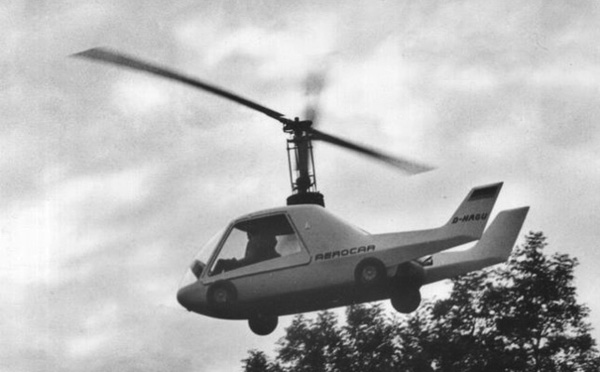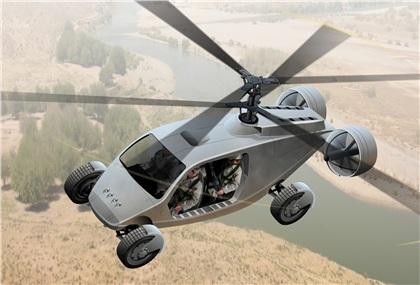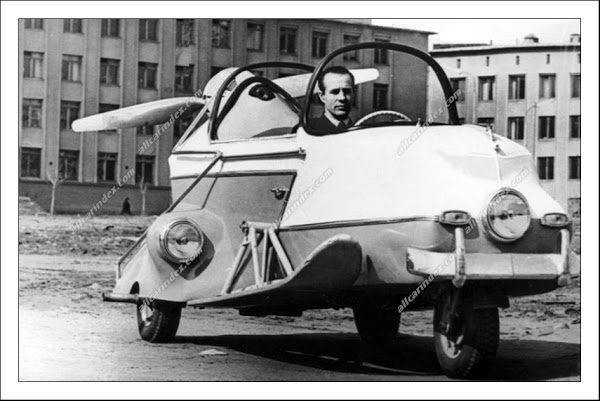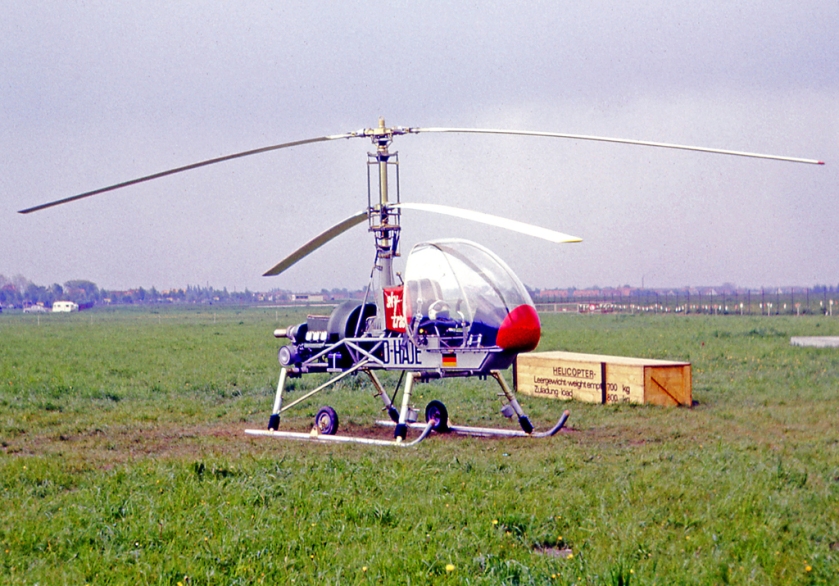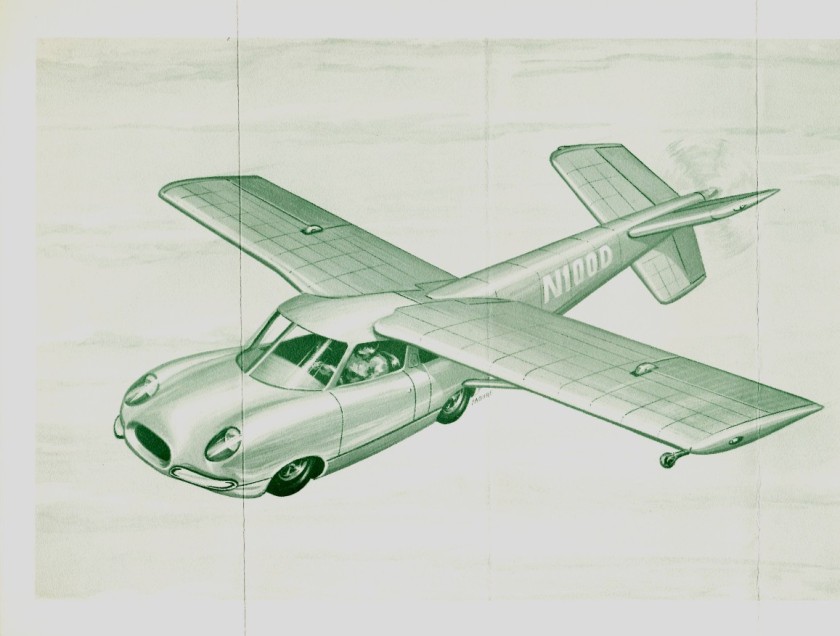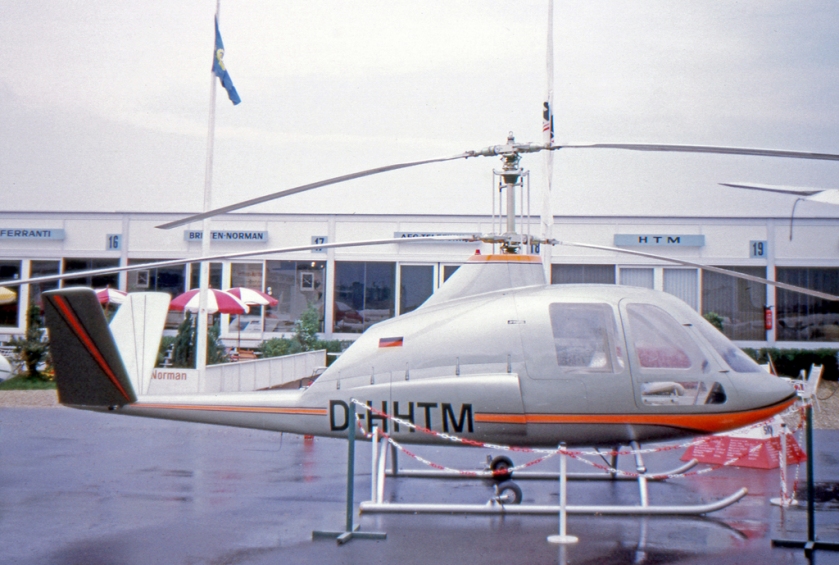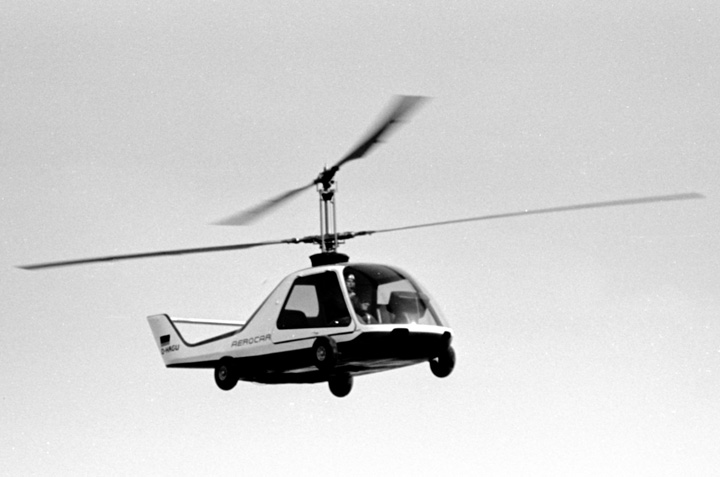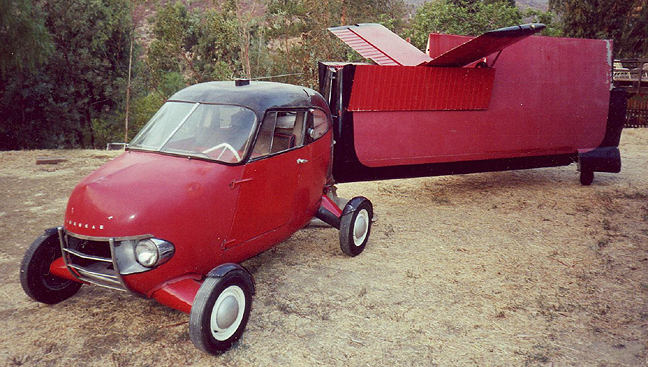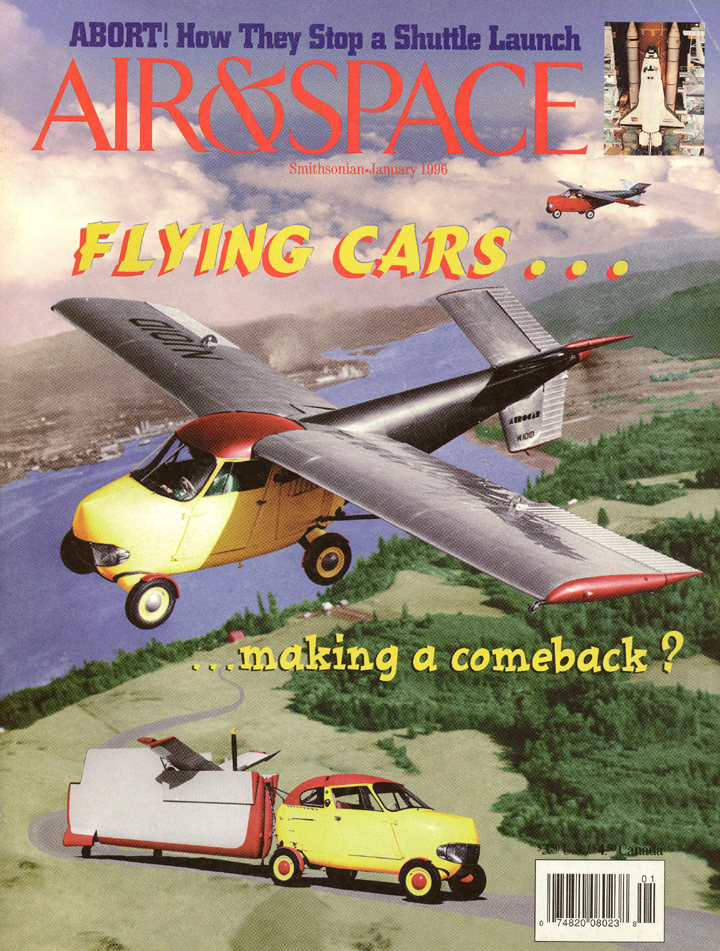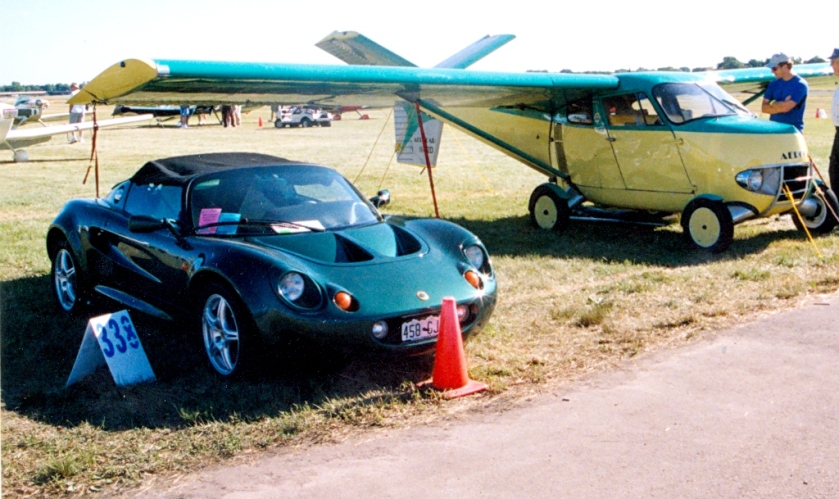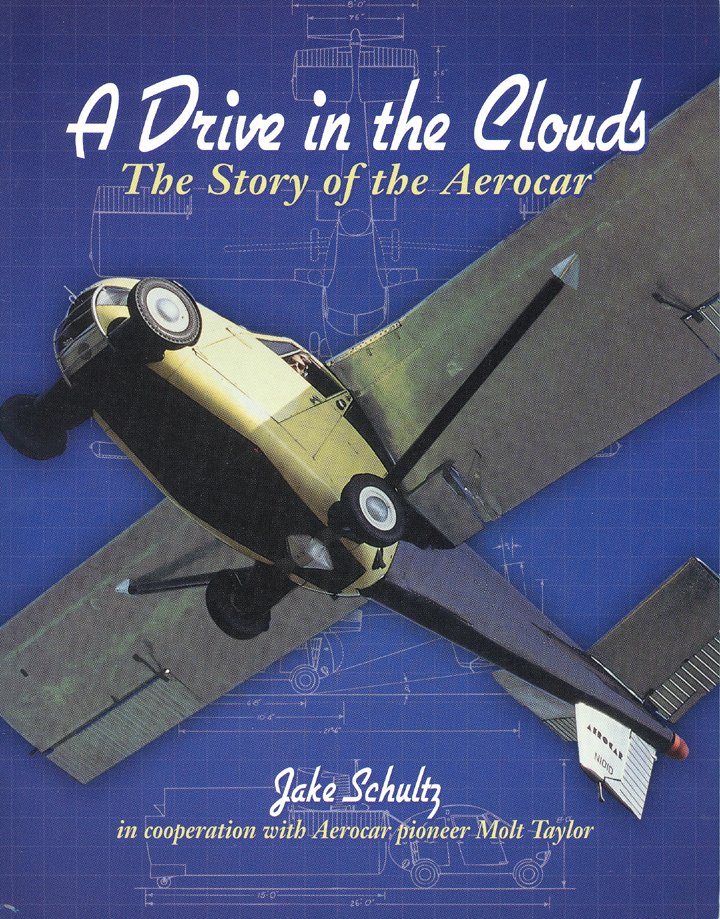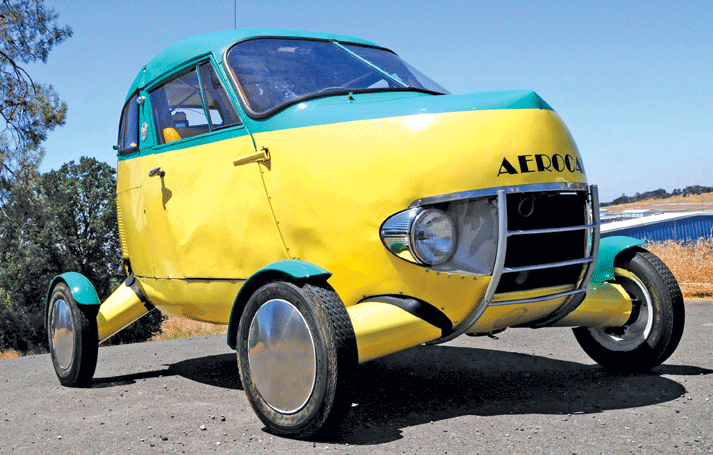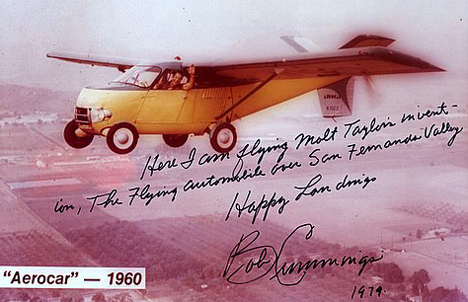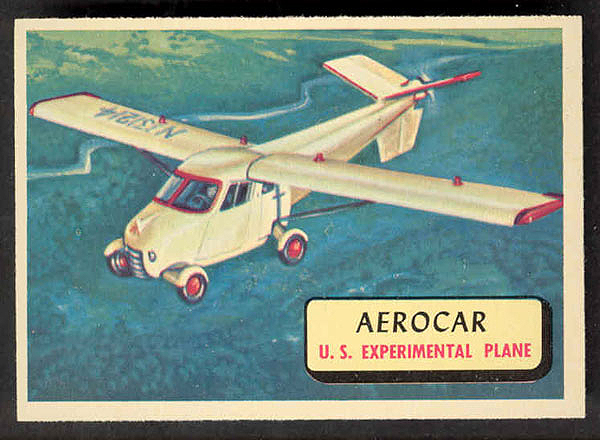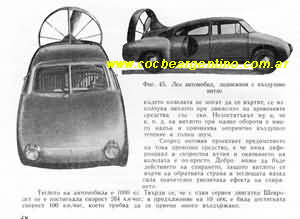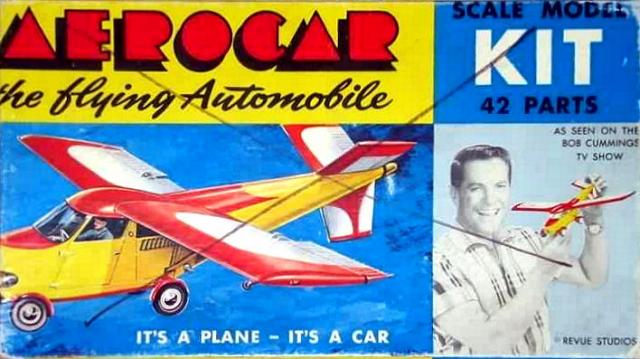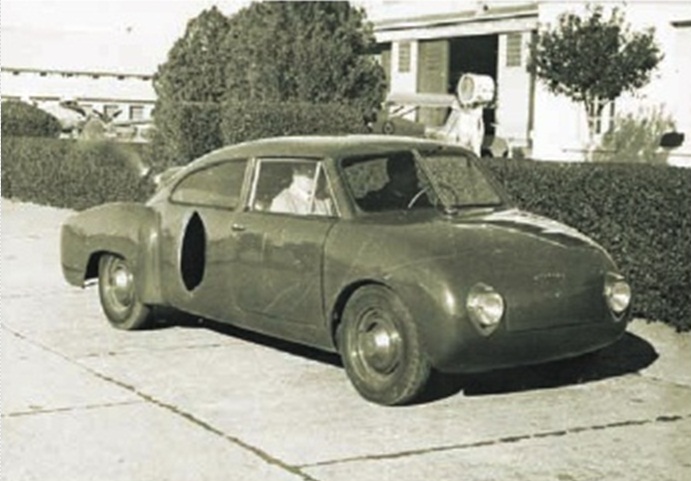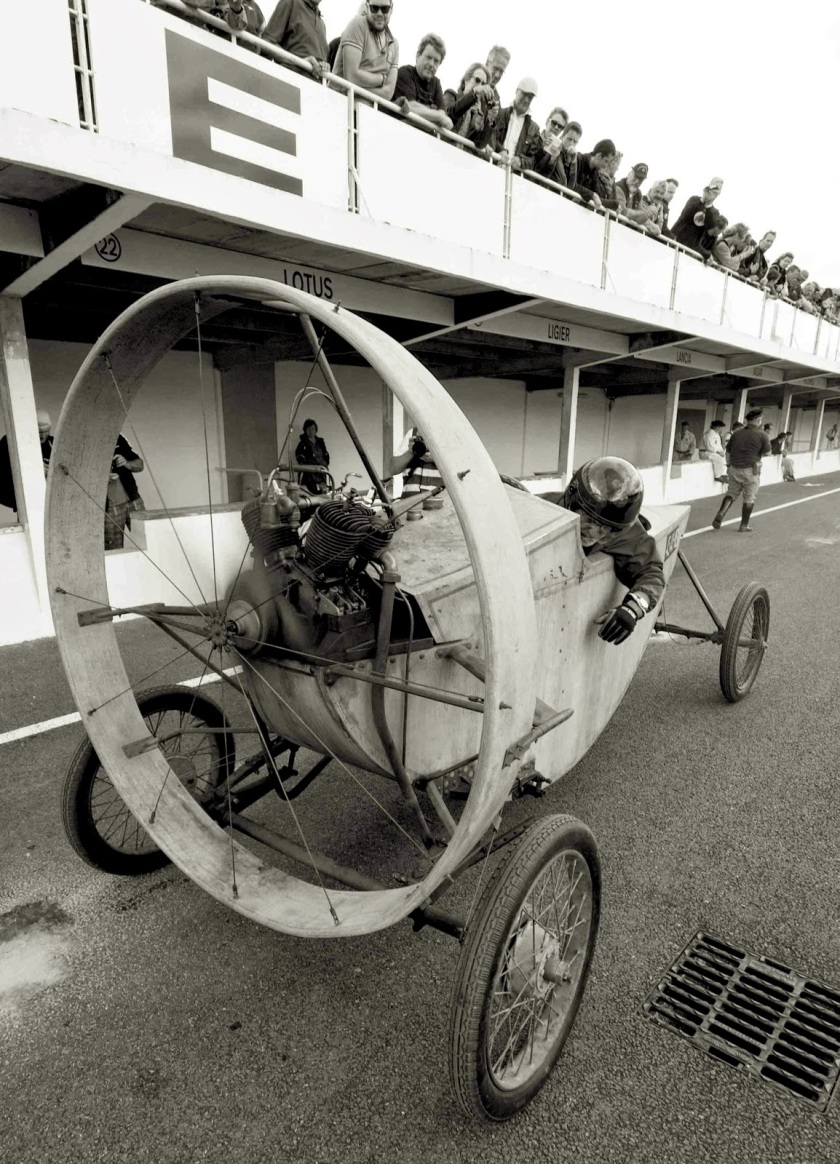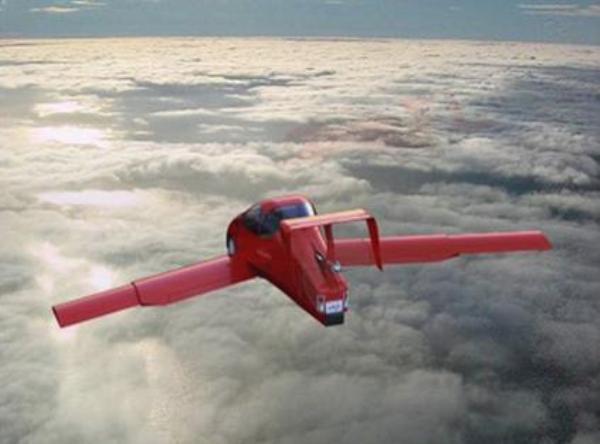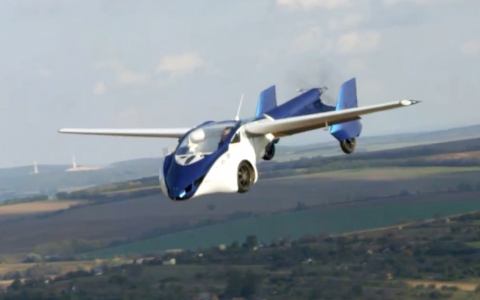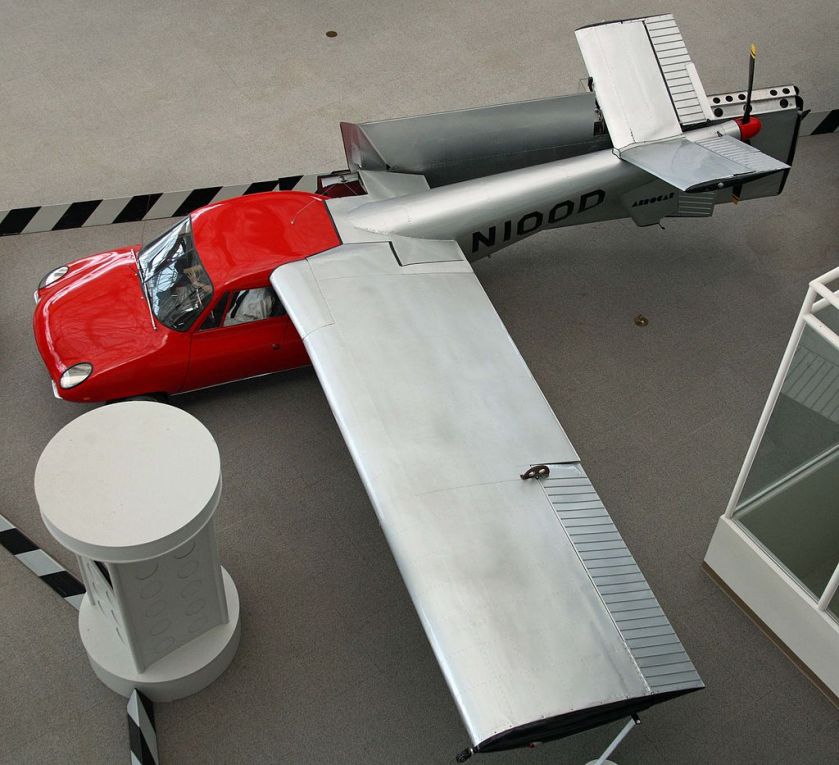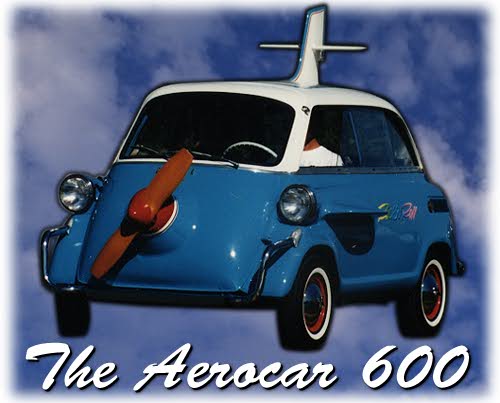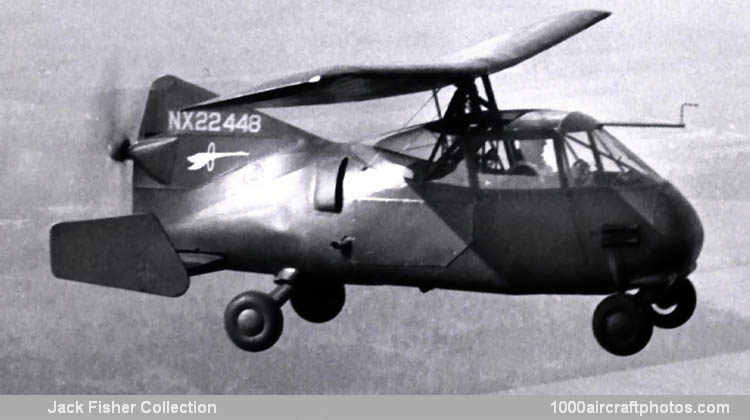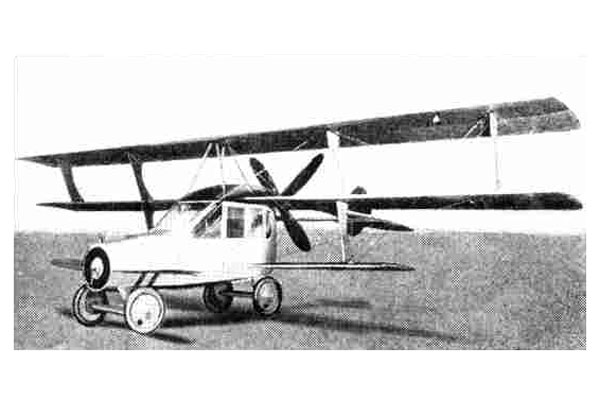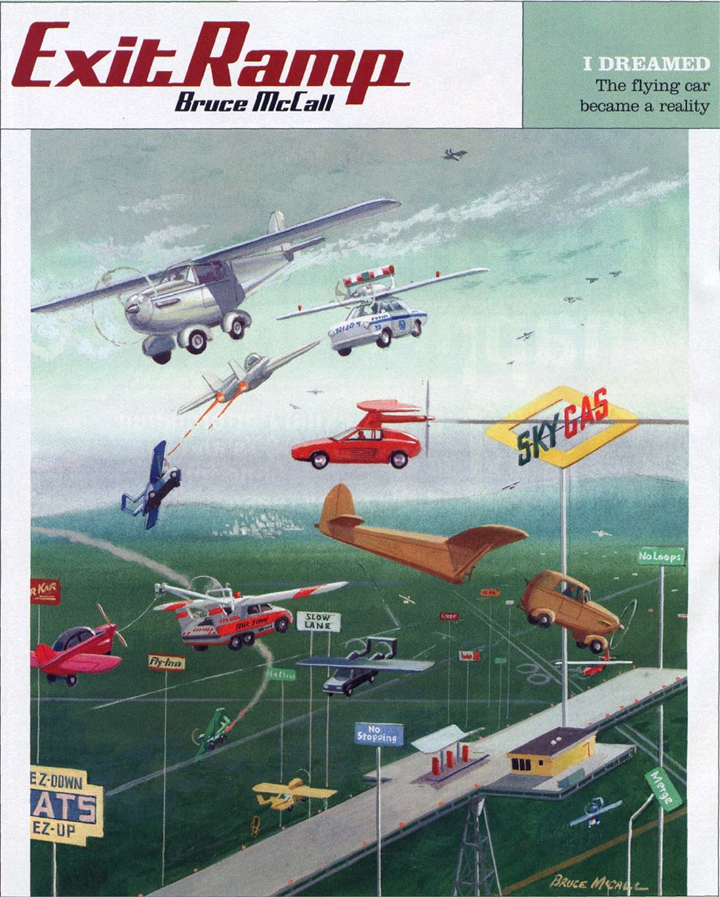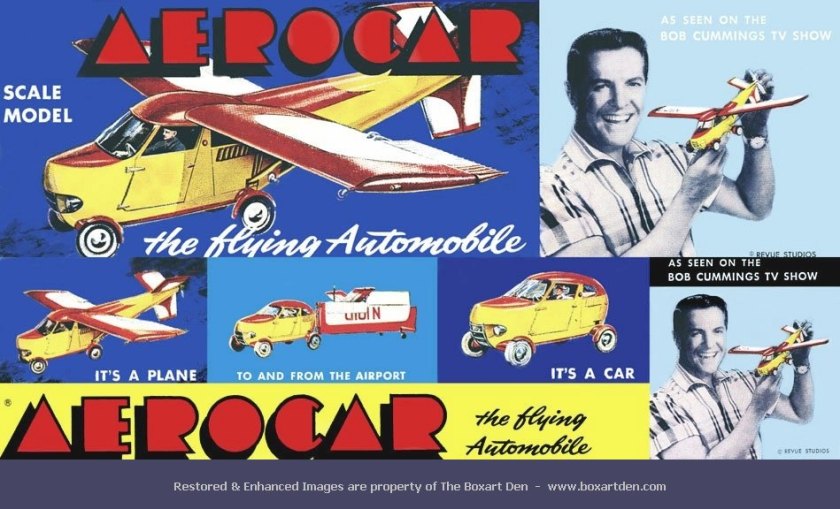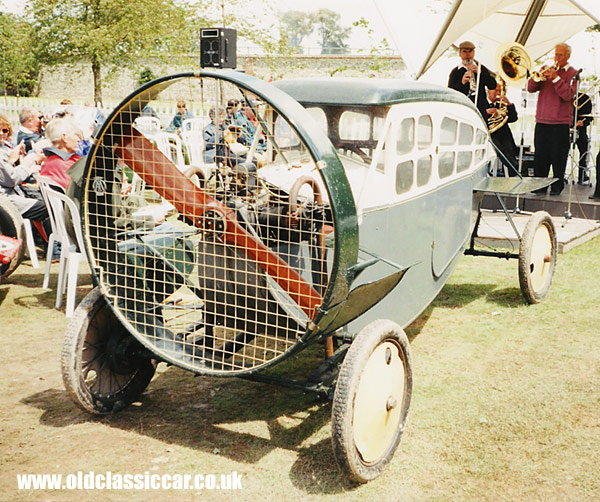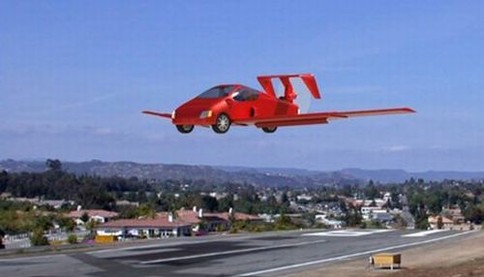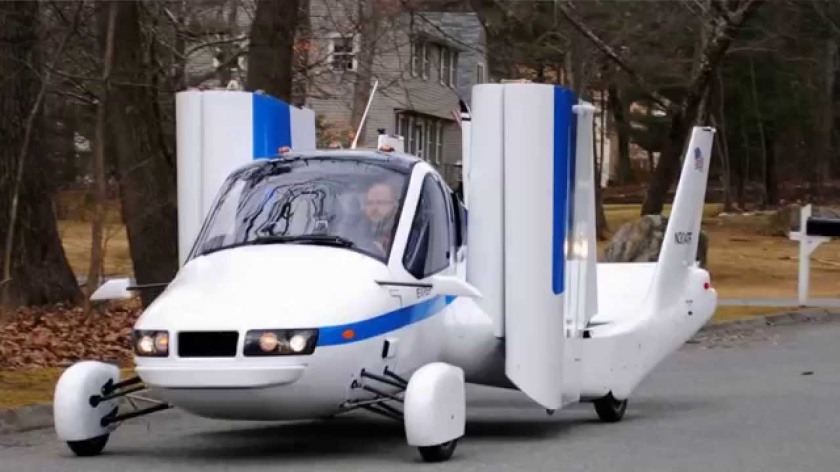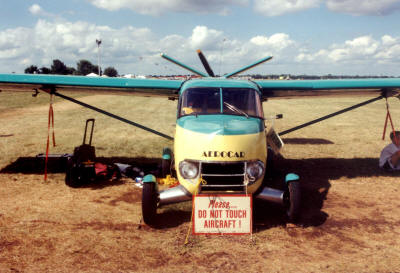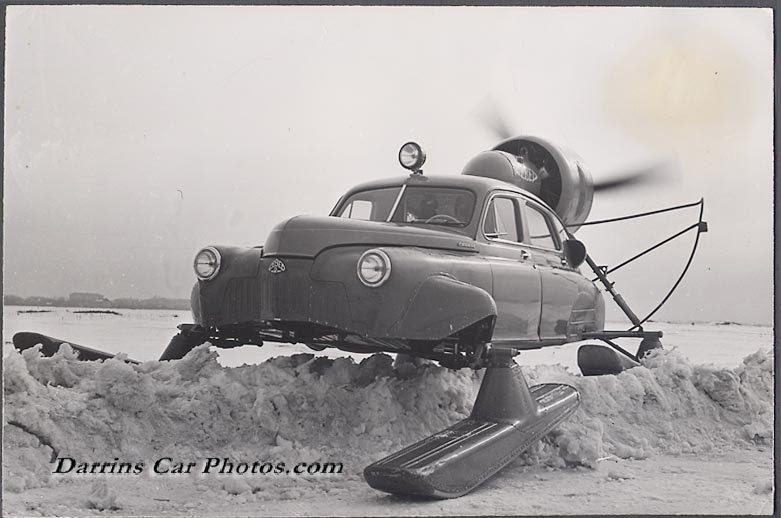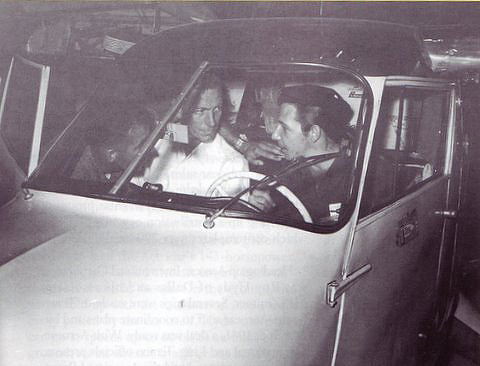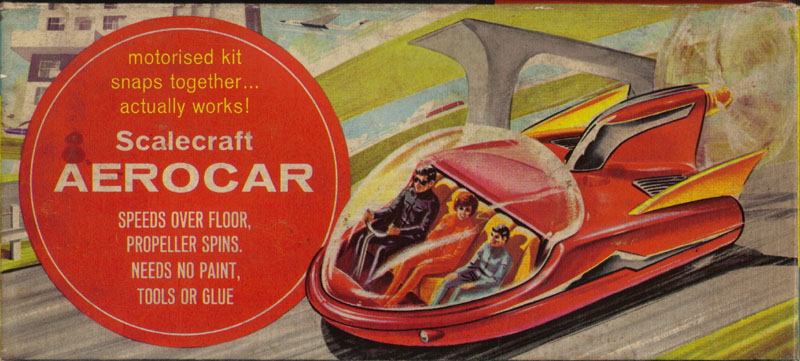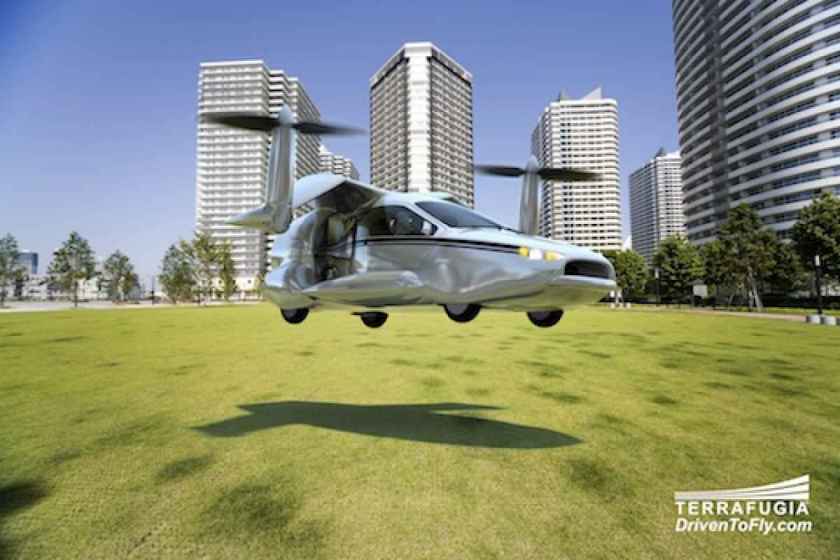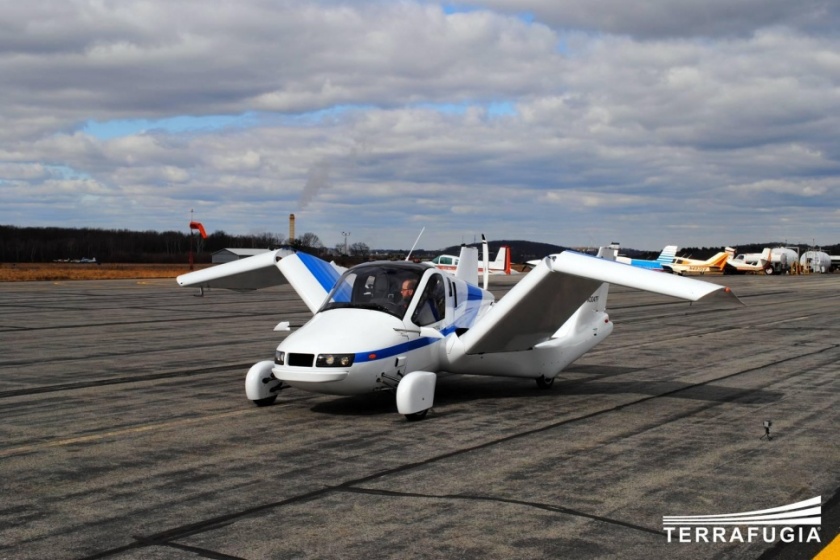Aerocar
| Aerocar | |
|---|---|
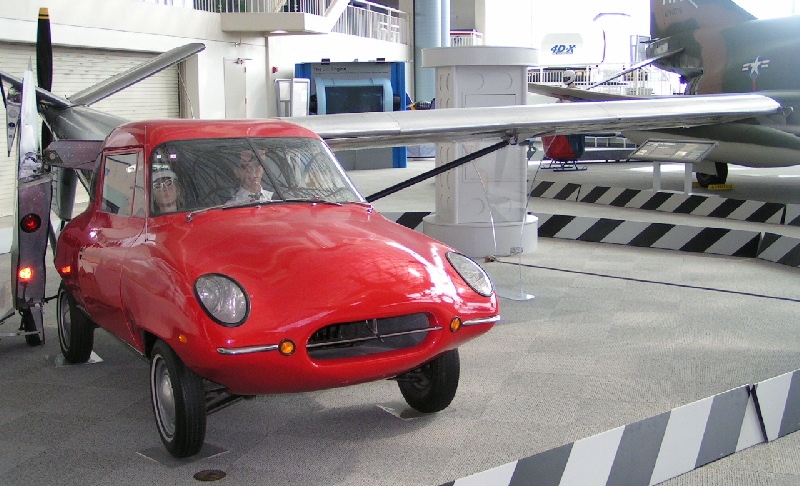 |
|
| Taylor Aerocar III on museum display | |
| Role | |
| Manufacturer | Aerocar International |
| Designer | Moulton Taylor |
| First flight | 1949 |
| Number built | 6 |
Aerocar International‘s Aerocar (often called the Taylor Aerocar) was an American roadable aircraft, designed and built by Moulton Taylor in Longview, Washington, in 1949. Although six examples were built, the Aerocar never entered production.
Design and development
Taylor’s design of a roadable aircraft dates back to 1946. During a trip to Delaware, he met inventor Robert E. Fulton, Jr., who had designed an earlier roadable airplane, the Airphibian. Taylor recognized that the detachable wings of Fulton’s design would be better replaced by folding wings. His prototype Aerocar utilized folding wings that allowed the road vehicle to be converted into flight mode in five minutes by one person. When the rear license plate was flipped up, the operator could connect the propeller shaft and attach a pusher propeller. The same engine drove the front wheels through a three-speed manual transmission. When operated as an aircraft, the road transmission was simply left in neutral (though backing up during taxiing was possible by the using the reverse gear.) On the road, the wings and tail unit were designed to be towed behind the vehicle. Aerocars could drive up to 60 miles per hour and have a top airspeed of 110 miles per hour.
Testing and certification
Civil certification was gained in 1956 under the auspices of the Civil Aeronautics Administration (CAA), and Taylor reached a deal with Ling-Temco-Vought for serial production on the proviso that he was able to attract 500 orders. When he was able to find only half that number of buyers, plans for production ended, and only six examples were built, with one still flying as of 2008 and another rebuilt by Taylor into the only Aerocar III. In 2013, the Disney film, Planes honored the design with a character based on the aerocar, Franz aka Fliegenhosen.
The six models
There are four Aerocar I(s), one Aerocar II, and one Aerocar I that was rebuilt as an Aerocar III.
N4994P
N4994P (1949, originally N31214) is yellow with silver wings. It was the very first Aerocar and is on display at the EAA AirVenture Museum in Oshkosh, Wisconsin. It is maintained in flying condition but is not flown.
N101D
N101D (1954) is owned by Greg Herrick’s Yellowstone Aviation Inc. It is maintained in flying condition and is on display at the Golden Wings Flying Museum located on the south west side of the Anoka County-Blaine Airport in Minneapolis. This aircraft is featured flying overhead on the cover on the book “A Drive In the Clouds” by Jake Schultz. As of December, 2011, N101D is being offered for sale at an asking price of USD1.25 million.
N102D
N102D (1960) is yellow and green. The last Aerocar built and the only one still flying, it is owned by Ed Sweeney and is on display at the Kissimmee Air Museum located at the Kissimmee Gateway Airport in Kissimmee, Florida. N102D was the only Aerocar built with the larger O-360 Lycoming powerplant giving it much better performance. It is the only road legal and driven Aerocar left. It is currently flown by the owner’s son Sean Sweeney. It was previously owned by actor Bob Cummings, who used it in his TV sitcom The New Bob Cummings Show. It has also appeared in James May‘s “Big Idea” on BBC2, first aired Sunday September 28, 2008. Inspired by this vehicle, Ed Sweeney is currently developing the Aerocar 2000 via his Aerocar firm.
N103D
N103D (1956) has been repainted to red/black with red wings. It has been owned by Carl Felling and Marilyn Stine of Grand Junction, Colorado since 1981. It once flew Fidel Castro‘s brother, Raúl Castro in Cuba. It hit a horse on the runway and damaged the aircraft.
From 1961-1963 the Aerocar was operated under contract between Star Stations (Don Burden) and Wik’s Air Service, Inc. It was used as a traffic-watch (AIRWATCH) aircraft for KISN (910AM) radio station in Portland, Oregon where it was flown by “Scotty Wright” (Scotty Wright was the alias used by the acting pilot of the Aerocar during traffic-watch transmissions). Several pilots provided the AIRWATCH service beginning with World War II veteran pilot Guilford Wikander, President of Wik’s Air Service, Inc. Guilford was followed in order by his sister Ruth Wikander, W. John Jacob III, Wayne Nutsch and Alan Maris. Scotty Wright reports Nutsch having 350 flying hours in N103D performing AIRWATCH duty. Traffic reporting was from 7:00 AM–8:30 AM and 4:30 PM–6:00 PM. During the Aerocar’s AIRWATCH missions, it was painted white with red hearts and had the letters KISN on the top and bottom of the wings.
The aircraft was equipped with an emergency police/fire receiver for use in reporting emergency events on KISN radio stations broadcast. When flown for KISN it was based at Wik’s Air Service, Hillsboro Airport (HIO), Hillsboro Oregon. On one of its more eventful flights for KISN it survived the Columbus Day Storm of 1962 without damage after its evening traffic reporting flight. Ruth Wikander was piloting the aircraft at that particular time and is credited with the successful landing during extreme wind conditions (perhaps more than 100 mph). Ruth Wikander was an active member of the 99’s, the International Organization of Women Pilots. In 1962 Ruth Wikander drove the Aerocar as an automobile while trailering the wings in the annual Portland Rose Festival parade. The Aerocar was an integral part of KISN Radio and can be seen at stumptownblogger.com along with photos of famous rock musicians and KISN DJ’s of the times.
Last flown in 1977, the aircraft is no longer airworthy and has been in storage ever since. It is currently listed for sale for the price of US$2.2 million.
N107D (Aerocar II)
N4345F (Aerocar III)
The sixth Aerocar (N4345F) is painted red with silver wings. It was the final flying car effort by Moulton Taylor. The vehicle began life as one of the original Aerocars, but Taylor bought it back from a customer after it had been damaged in an accident on the ground in the 1960s. From there, he considerably re-built it as the Aerocar III, replacing the original cabin with a sleeker, more streamlined front wheel drive one (although it still fell far short of the sporty lines that Taylor had originally wanted to give it). The automotive unit weighed 1,100 lbs and was powered by a 140 hp Lycoming O-320. The trailer wheels for the wings in towed configuration were deployable from a compartment on the outside of each wing leading edge. The propeller driveshaft contains fine ball bearings that swing outward with centrifugal force, creating stiffness and dampening. Taylor was able to attract some interest from Ford, but ultimately, no production resulted. The single prototype is now displayed at Seattle’s Museum of Flight, where it is displayed wearing registration N100D.
Specifications (Aerocar I)
Data from Jane’s All The World’s Aircraft 1961–62
General characteristics
- Crew: one
- Capacity: 1 passenger
- Length: 21 ft 6 in (6.55 m)
- Wingspan: 34 ft 0 in (10.36 m)
- Height: 7 ft 6 in (2.29 m)
- Wing area: 190 sq ft (18 m2)
- Empty weight: 1,500 lb (680 kg)
- Gross weight: 2,100 lb (953 kg)
- Powerplant: 1 × Lycoming O-320 air-cooled flat-four, 143 hp (107 kW)
- Propellers: 2-bladed Hartzell HA12 UF, 6 ft 4 in (1.93 m) diameter
Performance
- Maximum speed: 117 mph (188 km/h; 102 kn)
- Cruise speed: 97 mph (84 kn; 156 km/h)
- Stall speed: 50 mph (43 kn; 80 km/h)
- Range: 300 mi (261 nmi; 483 km)
- Service ceiling: 12,000 ft (3,658 m)
- Rate of climb: 610 ft/min (3.1 m/s)
Aerocar (1905 automobile)
 |
|
| Industry | Automobile |
|---|---|
| Fate | factory sold |
| Successor | Hudson Motor Car Company |
| Founded | 1905 |
| Defunct | 1908 |
| Headquarters | Detroit, Michigan, USA |
|
Key people
|
Alexander Malcomson Henry Ford |
| Products | automobiles |
The Aerocar was an American automobile built from 1905 to 1908 in Detroit, Michigan. Backed by Henry Ford‘s former partner, coal merchant Alexander Malcomson, the short-lived company offered an air-cooled 24 hp(18 kW) four-cylinder luxury car which sold for $2800.
The factory was sold to Hudson Motor Car Company.
History
In 1906, the Model A was powered by a Reeves 24-horsepower, four-cylinder, air-cooled engine. It came with a “Standard Extension Black Top” and two gas headlights as well as “Full Oil Lamp Equipment.” The automobile had a Prest-o-Lite tank, Hartford shock absorbers, Gabriel horn and a speedometer. It also came with an extra tire and inner tube in a waterproof case with attaching irons, robe-rail and a footrest in Tonneau. A toolbox with full equipment was attached to the exterior running board. The machine cost $2,800.[1] The air-cooled engine was later replaced by a Reeves water-cooled model.
Advertisements
Aero Car (1919 automobile)
Connected to:
The Aero Car was a British 5/7 hp (533 W) flat twin-engine cyclecar manufactured from 1919 to 1920 by the Aerocar Engineering Company in Clapton, London. The engine was an air-cooled flat-twin built by Blackburne and the gearbox was a Sturmey-Archer. The body had a bullnose radiator and pointed tail.
Aero Car (1921 automobile)
The Aero Car was a planned Americanautomobile. It was to have used a two-cycle engine to drive a propeller. The car, whose wheelbase was only 60 inches (1,524 mm), was to have sold for $160. One prototype was made, in 1921, before the project was shelved.
Wagner Aerocar
| Wagner Aerocar | |
|---|---|
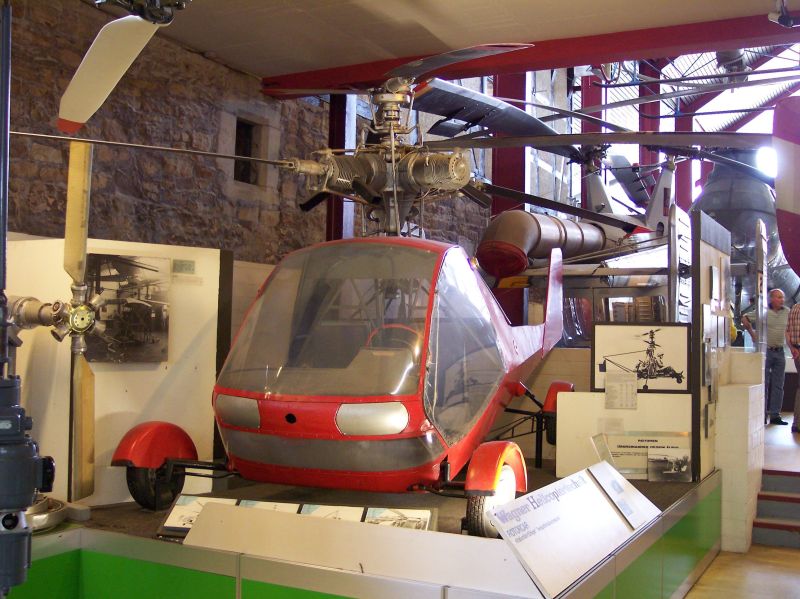
|
|
| Role | |
| National origin | Germany |
| Manufacturer | Wagner |
| Designer | Alfred Vogt |
| Introduction | 1965 |
| Developed from | HTM Skytrac |
| Variants | HTM Skytrac |
The Wagner FJ-V3 Aerocar was a prototype 4-place flying automobile. The vehicle used counter-rotating rotor helicopter technology for flight.
Design
The Aerocar was developed in the era of space-age futurism, and looked the part. It looked slightly like the Jetsons flying car, with a large bubble cockpit, tailfins, and disproportionately small wheels for a car. It was developed from the Rotocar III design which was based on the Sky-trac 3 helicopter. The helicopter used counter-rotating rotors. On ground propulsion to the wheels was through a hydraulic linkage to the engine.
Operational history
A prototype with the registration D-HAGU was completed and flown in 1965. The Franklin 6AS-335-B engine was replaced with a 134lb, 420shp Turbomeca Oredon turbine engine with a front mounted gearbox. The design was sold to Helikopter Technik Munchen (HTM). HTM suspended development of the Aerocar in 1971.
Variants
Specifications Wagner Aerocar
General characteristics
- Capacity: 4
- Powerplant: 1 × Franklin , 190 kW (260 hp)
Performance
Notes
- Jump up^ http://www.unrealaircraft.com/roadable/wagner.php
- Jump up^ Air pictorial journal of the Air League, Volume 30.
References
- Flight International, June 1968
- Aero Engines; Flight International, Jan 2, 1969
- http://www.abpic.co.uk/search.php?q=Wagner%20Rotocar%203&u=type
Aerocar 2000
| Aerocar 2000 | |
|---|---|
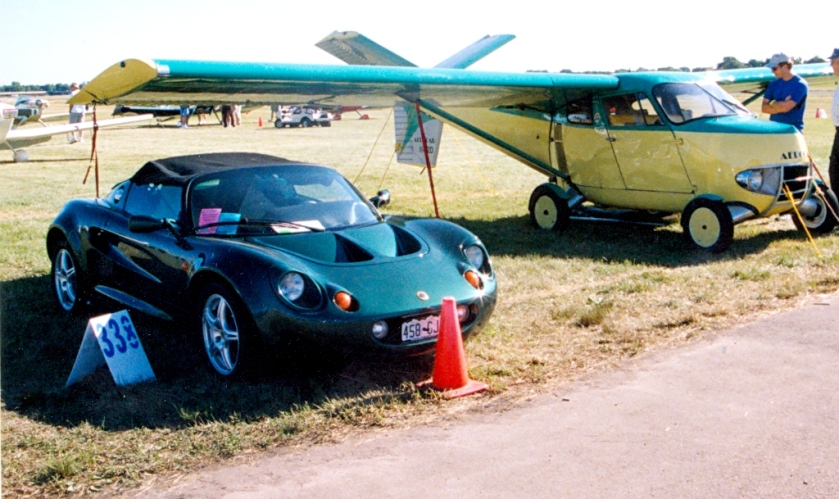 |
|
| A Lotus Elise displayed next to an Aerocar to promote the Aerocar 2000 concept | |
| Role | Flying automobile |
| National origin | United States |
| Manufacturer | Aerocar |
| Designer | Ed Sweeney |
| Status | Halted |
| Number built | 2 (Non flying) |
The was a proposed flying car under development in the early 2000s in the United States. The Aerocar 2000 was designed by Ed Sweeney, who was inspired by Moulton Taylor‘s Aerocar of the 1950s (and is the owner of the only still-flying example of this vehicle). The Aerocar 2000 consisted of a removable wings, tail, and powerplant “flight module” added to a modified Lotus Elise roadster.
Comparison to original Aerocar
Specifications (Aerocar 2000, as designed)In conception, this was far closer to the AVE Mizar of the early 1970s than to Taylor’s designs, the vehicle portions of which were purpose-designed and built. Another difference with the original Aerocar (and similarity to the Mizar) is that the flight module is not designed to be taken away from the airfield. Finally, while the Aerocar used the one engine to drive both the road wheels and the propeller, the Aerocar 2000 (again like the Mizar) uses two separate engines. In the Aerocar 2000’s case, the flight engine is a twin-turbocharged V-8 motor from a Lotus Esprit. A far lighter three-cylinder engine and gearbox from a Chevrolet Sprint is to be installed in the road module to power the vehicle on the ground.
Data from The Aerocar Home Page
General characteristics
- Crew: One (pilot)
- Capacity: one passenger
- Length: 27 ft (8.2 m)
- Wingspan: 36 ft (11 m)
- Height: 10 ft 6 in (3.20 m)
- Empty weight: 2,850 lb (1,293 kg)
- Max takeoff weight: 3,450 lb (1,565 kg)
- Powerplant: 1 × Lotus 2.5L V8 piston engine, 350 hp (260 kW)
- Propellers: 3-bladed MT-Propeller constant-speed
Performance
- Cruise speed: 268 mph (233 kn; 431 km/h)
- Range: 300 mi (261 nmi; 483 km)
References
- Jump up^ Grossman, John (October 1996). “It’s a car! It’s a plane!”. Boys’ Life (Irving, TX: Boy Scouts of America): 40.
- Jump up^ Green, George W. (2010). Flying Cars, Amphibious Vehicles and Other Dual Mode Transports: An Illustrated Worldwide History. Jefferson, NC: McFarland & Company. p. 60. ISBN 978-0786445561.
- Jump up^ Smith, Martin J.; Patrick J. Kiger (2006). Oops: 20 Life Lessons from the Fiascoes That Shaped America. New York: HarperCollins. pp. 219–220. ISBN 978-0060780838.
- Jump up^ Grzybala, Kim (October 1, 2009). “Have Our Flying Car Dreams Come True?”. Popular Mechanics. Retrieved 2013-04-25.
- Jump up^ Ed Sweeney (May 29, 2002), The Aerocar Home Page, Aerocar LLC, retrieved 2013-04-25
Portsmouth Aerocar
| Aerocar | |
|---|---|
| Role | |
| National origin | UK |
| Manufacturer | Portsmouth Aviation |
| Designer | Major F. L. Luxmoore (concept) |
| First flight | 18 June 1947 |
| Number built | 1 |
The Porstmouth Aerocar was a British light utility aircraft design of the late 1940s. It was intended to be an aircraft that could be used for a variety of tasks including transport “mobile office” but only one prototype was built being scrapped in 1950.
Design and development
The Aerocar was a high-wing monoplane with gondola fuselage and twin-boom tailplane and tricycle undercarriage. The cabin could hold five passengers in addition to the pilot. Four doors were fitted to the cabin. The manufacturer claimed that as well as taking off in 160 yards on (dry) grass, it could climb on one engine at full load at 230 ft/min.
It was of composite construction; fabric-covered wooden wings, tail booms and tail fitted to a metal fuselage but the production model would have been all-metal. Clamshell doors at the rear of the fuselage were advertised.
Construction of both a Major and Minor variants was started but the company decided that the Minor would not have enough power and construction was abandoned. The Major prototype was completed and started taxying trials at Portsmouth on 18 June 1947, Frank Luxmoore was pleased with the trials so he undertook the maiden flight the same day.
It was exhibited at the SBAC but funding for the development of the Aerocar was dependent on an agreement for licence manufacture in India. With the uncertainty arising from the partition of India in 1947, this became unlikely and Portsmouth Aviation was unable to continue with development. With Lionel Balfour, the driving force behind the Aerocar, no longer part of the company the Aerocar was stored until scrapped.
To support planned production in India the uncompleted Minor was sent to act as a pattern aircraft, the Indian financial backers failed to support the project and the idea of production in India was abandoned.
Variants
- Aerocar Major
- Powered by two 155hp Cirrus Major engines and a retractable landing gear, one prototype built and flown.
- Aerocar Minor
- Planned variant powered by two 101hp Cirrus Minor II engines and a retractable landing gear, construction of a prototype abandoned and moved to India to act as a pattern aircraft for local production.
- Aerocar Senior
- Proposed variant of the Major with a fixed landing gear and lower level of equipment fit.
- Aerocar Junior
- Proposed variant of the Minor with a fixed landing gear and a lower level of equipment fit.
Specifications (Aerocar Major)
Data from Flight Sept 1947 p280
General characteristics
- Crew: 1 pilot
- Capacity: 5 passengers
- Payload: 1000 lb ()
- Length: 26 ft 3 in ()
- Wingspan: 42 ft ()
- Height: 10 ft 7 in ()
- Loaded weight: 3,950 lb ()
- Powerplant: 2 × Blackburn Cirrus Major piston engine, 155 hp () each
- Propellers: Rotol two-bladed “variable pitch airscrews” propeller
Performance
- Maximum speed: 164 mph
- Cruise speed: 136 mph
- Range: 500 miles ()
- Rate of climb: 1,100 ft/min ()
Notes
- Jump up^ Flight
- Jump up^ Flight 1947
- Jump up^ http://www.flightglobal.com/pdfarchive/view/1946/1946%20-%201018.html Flight
- ^ Jump up to:a b c d e f g Partington, David (2013). “Head-on View No. 49 – The Portsmouth Aerocar”. Archive (Air-Britain) 2013 (4): 151–154. ISSN 0262-4923.
- Jump up^ http://www.portav.co.uk/Downloads/PAAerocar.pdf
References
- “Advertisements”, Flight, 12 September 1946, p. 31
- “Portsmouth Aerocar”, Flight, 3 July 1947, p. 20
- “British Aircraft”, Flight, 11 September 1947, p. 280
See also
- Aircraft of comparable role, configuration and era
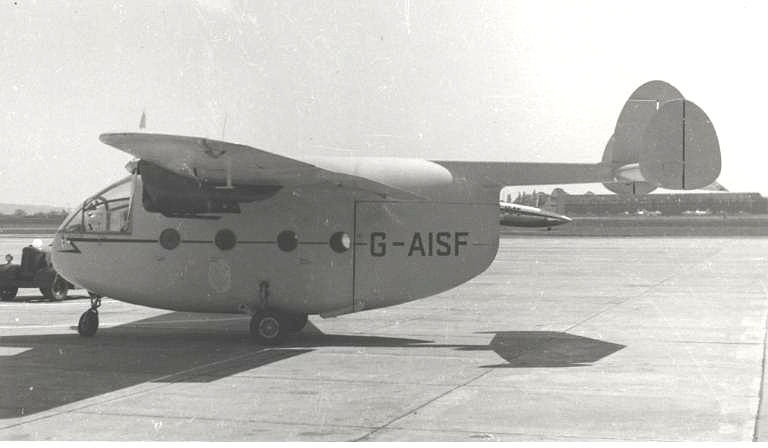
- 1955 Miles M.57 Aerovan
- Miles Aerovan
Nearly 100 years ago, aeronautics pioneer Glenn Curtiss showed up at the New York Pan-American Aeronautical Exposition with his Model 11 Autoplane, widely considered to be the first serious attempt at a car equally comfortable on the wing and the runway. What it lacked in aesthetic appeal it made up for in ingenuity, and the boxy aluminum vehicle made headlines. Powered by a four-bladed propeller that sat behind the cab, the Autoplane was 27 feet long and had a wingspan that stretched more than 40 feet. Curtiss made a short flight in his winged car, but the first patent for a flying automobile went to competing inventor Felix Longobardi in 1918.
Advanced Vehicle Engineers rolled out its flying car prototype, the AVE Mizar, between 1971 and 1973. Perhaps taking a hint from the Convaircar, the Mizar wedded the flying power of a Cessna Skymaster with the body of a Ford Pinto. Designed by Henry Smolinksi, the idea was to work with cars that were already being commercially produced and attach wings and a tail. The Mizar came to a quick end, however, when Smolinski and other Mizar designers were killed in a crash in September 1973.
http://www.coachbuilt.com/bui/c/curtiss/curtiss.htm
This one is pretty much a car with an airplane plopped on top of it. While many early attempts at flying cars were criticized for the motley ways they mixed elements of automobile design with spare plane parts, Henry Dreyfuss seems to have decided to rig up a vehicle that was unambiguously half of each. While the possibility of, say, parallel parking the car seems to have been outright ignored, the contraption had a certain utilitarian charm. Dreyfuss was something of a well-known inventor, but that did little to help him salvage the Convaircar’s reputation after one went down in a test flight.
The Aerocar was one of a few other flying cars approved by the government. Inspired by a chance meeting between inventor Moulton Taylor and Airphibian designer Robert Fulton, the Aerocar sported detachable wings and tail. Five Aerocars were produced, and while four of them wound up in museums, one was in semi-active use through at least 2002, when Ed Sweeney of Florida would snap on the wings for flights with his wife between Daytona Beach and Orlando, Florida. “They would report me as traffic to other aircraft,” Sweeney said of air traffic controllers. “You have an automobile in your 9 o’clock position.”
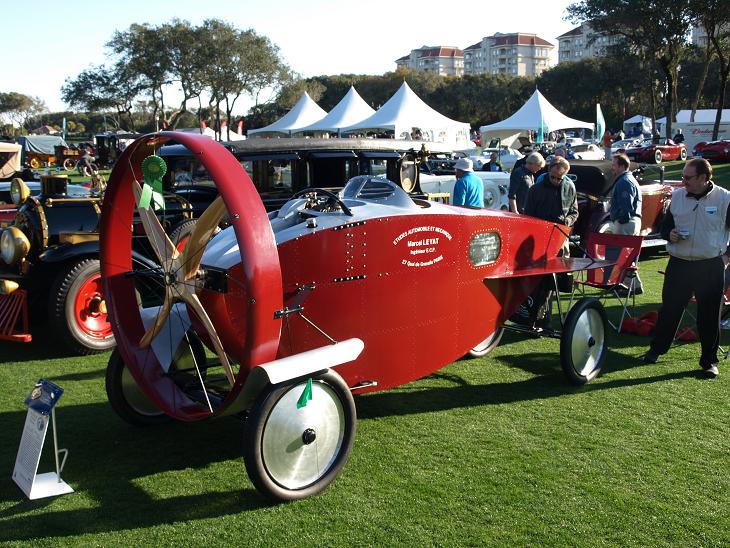
That’s my picture collection about Aerocar’s
